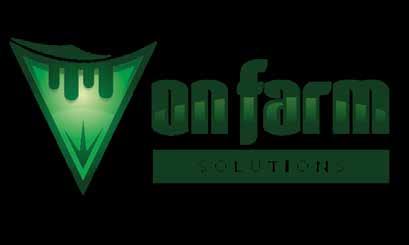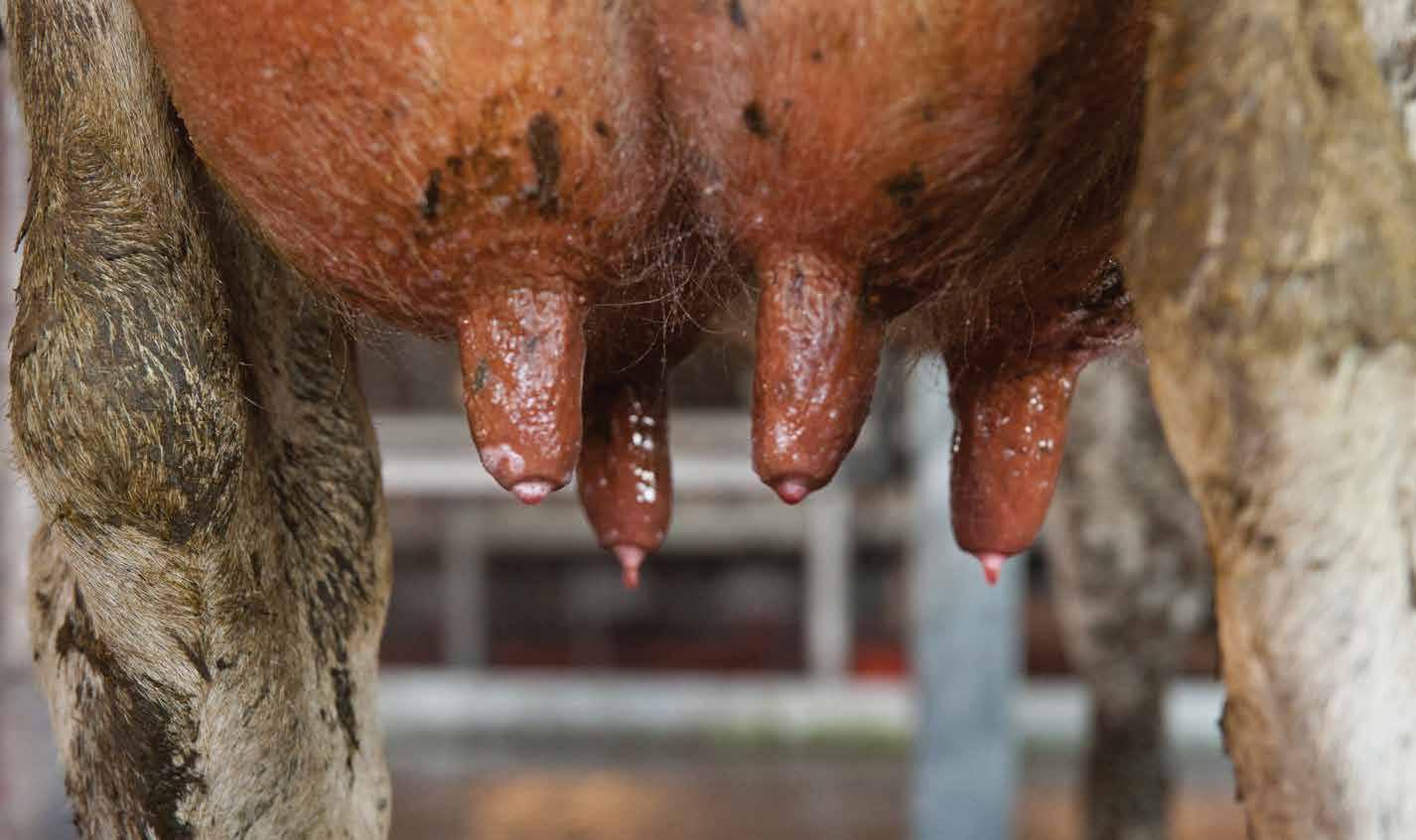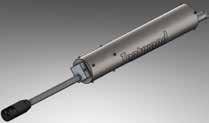














Our farms and our futures depend on us farming smarter. We have reached peak cow numbers and the nation is calling for better cows. Cows that can generate more milk, more efficiently. Cows that can produce more milk solids with less liveweight. Cows that can better utilise nutrients with lower nitrogen and methane outputs.
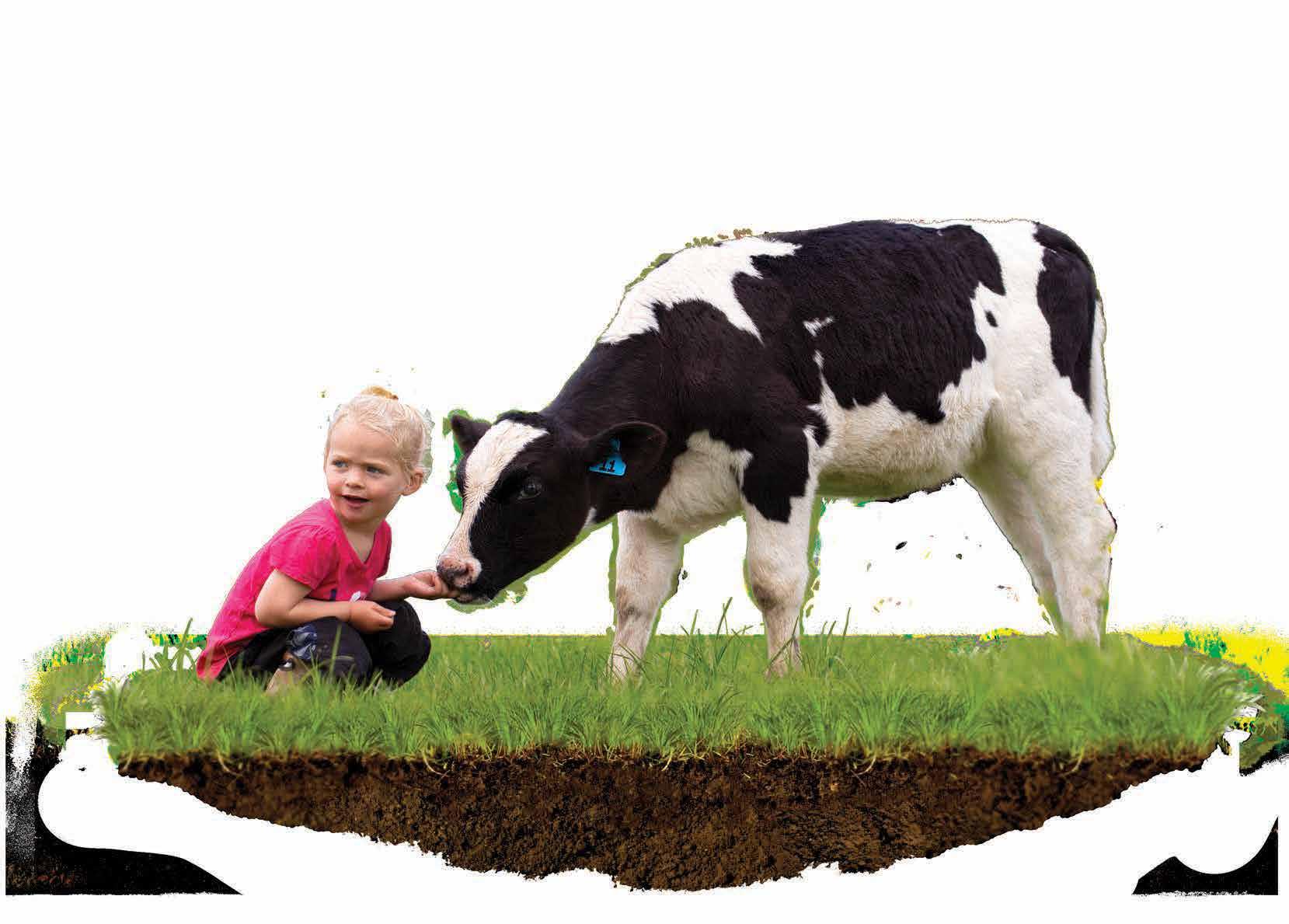
Our Premier Sires ® teams have been expertly chosen to help you accelerate your rates of genetic gain. While our Sexed team provides a 90% chance of generating heifer replacements from your best cows.
And every gain you make filters through the national database, building herd insights, and empowers other farmers to make better decisions for the next generation.
Talk to your Agri Manager today about farming for the next generation. Farm smarter with Premier Sires.
FONTERRA IS rejecting claims by rival processors that the co-opera tive

influence the
price to boost its raw
Fonterra says it objects to claims that the co-op is “gaming” the system.
The comments were made in the co-op’s submission to the parliamen tary select committee for primary production.
It is hearing submissions on the Government’s proposal to amend the Dairy Industry Restructuring Act (DIRA) to accommodate changes to the co-op’s capital structure.
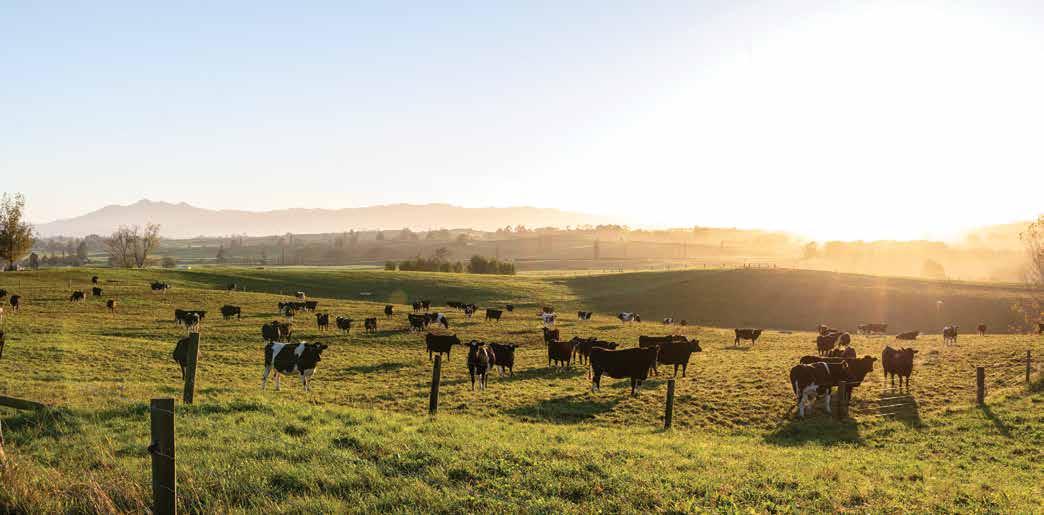
Fonterra chairman Peter McBride told the committee that many of the proposed DIRA amendments seem to address perceptions around the transparency and independence of the milk price regime.
“We respect the national interest in our milk price, considering that in the last financial year Fonterra’s milk payments represented $13.7 bil lion delivered to the New Zealand economy.
“And, as you will hear from our competitors, Fonterra’s milk price sets the benchmark for the indus try,” says McBride.
“So all New Zealand dairy farm ers, whether they supply Fonterra or not, benefit from the fair, trans parent, and independently overseen price we pay for our farmers’ milk.”
McBride goes on to say that, for
the record, Fonterra objects “to any inference that the co-op or the indi viduals involved in the process are somehow ‘gaming’ the system”.
“In fact, Fonterra has been advo cating for greater transparency of milk prices across the industry in all of our DIRA submissions.
“We continue to propose that DIRA be amended to require all pro cessors to publish prices paid for farmers’ milk.
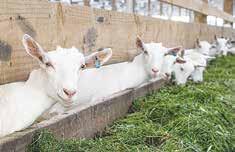

“Improved transparency of milk prices paid by other processors will address the current imbalance of information available to farmers and support contestability in milk supply.”
In their joint submission, four rival processors – Synlait, Miraka,
Open Country Dairy and Westland Milk – claimed that with the disman tling of the open entry and exit pro visions, the regulation of the base milk price remains the only substan tive DIRA provision supporting con testability in the raw milk market.
The submission acknowledges that the Government has included provisions which provide for increased transparency, oversight, and some independent management of the processes that determine the base milk price.
“These provisions provide cru cial changes which can start to bring credibility to the base milk price,” it says.
“The provisions do not prevent or limit Fonterra from paying a milk
price different to the base milk price.
“Fonterra has nevertheless crit icised them as unnecessarily intru sive.
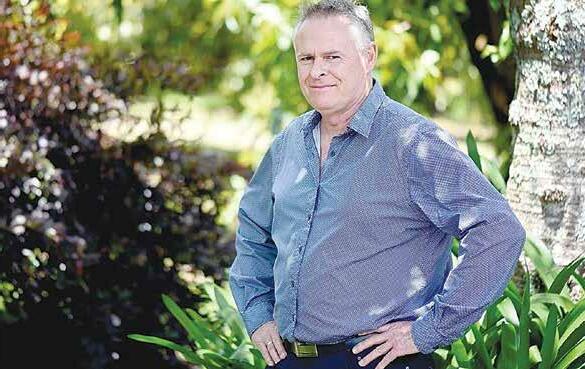
“Fonterra criticism can alterna tively be interpreted to be because they reduce Fonterra’s ability to con trol the base milk price.”
McBride notes that it’s interest ing their competitors are question ing the integrity of our milk price calculation.
He points out that, since 2012, the Commerce Commission has raised just two matters related to the inputs, assumptions and pro cesses used to calculate the base milk price, which Fonterra has not promptly addressed to the Commis sion’s satisfaction.
FONTERRA VETERAN Kelvin Wickham remembers the tough days when he was out in new overseas markets trying to flog off surplus milk.
He recalls Fonterra milk fetching a price of between $3 and $4/kgMS back then.
Today, the opposite rings true: with a milk price over $9/kgMS, the world is clamouring for every drop of milk Fon terra farmers can produce.
Wickham believes the hard work put into the coop’s foundation is paying off.
KELVIN WICKHAM says one of his biggest personal challenges was when he headed the China and India business.
He was President of Greater China and India from 2012 – 2014.
“It was a period of massive growth, when we were expanding in foodservice, launching consumer brands and building farms.
“It was a transformational time, as we were trying to seize the opportunity coming from more people being able to afford dairy, com bined with more favourable tariff arrangements.
“That was a fantastic as much as it was a challenging time for me.
“If I have any regrets, it would be forgetting to enjoy the journey at times.”
Wickham stepped down last month after 34 years in various senior management roles, finish ing off as chief executive
PLANT-BASED DRINKS have a role to play in the diets of consumers, but let’s be clear that it’s not milk.
Kelvin Wickham believes the discussion needs to be around “milk and…”
He says dairy benefits from a privileged position: milk is nutri ent packed and punches above its weight when it comes to provid ing the nutrition people need for a healthy life.
“In a world where there is a growing number of milk substitutes, we must ensure we continue to promote and raise awareness of the nutritional value of dairy, and how it can play an important role in a healthy diet.
“Our industry must make sure it’s at the table when it comes to deciding and putting the right ac tions in place to create a sustain able food system.”
He notes that Fonterra wants to be in a position to respond to the
of Americas, Middle East and African (AMENA) business.
Wickham told Dairy News that he has been
world’s increasing need for food and the changing needs of consum ers.



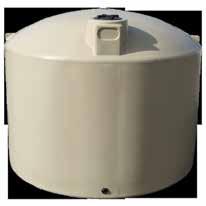

His advice is that we must keep an open mind about plant-based options as consumer preferences evolve, and be at the fore-front of innovation in this space.
“A great example of how we’re doing that is our partnership with DSM. Recently we established a new start-up company to acceler ate the development and commer cialisation of fermentation-derived proteins with dairy-like properties.
“We’re confident that consum ers around the world will continue to want natural, grass-fed dairy as a premium source of nutrition.
“At the same time, we recognise consumers have different nutri tional needs and preferences, and we believe that there’s potential for alternative proteins to complement our core dairy business.”
with the co-op through many highs and lows.
But he points out that today Fonterra is deliver ing fantastic results.
“This shows that the focus on value, kicked off in the last five years, is really starting to pay off for our farmers and NZ as a whole – $13.7 billion was put back into the NZ economy in milk price
payments alone in FY22,” he says.
“Twenty years ago, I remember being out in world, trying to sell our NZ milk into new markets and find new customers. We had a surplus of milk to sell, and a milk price of around $3-4.
“Now, that hard work put into the foundation is paying off, and the oppo
site is true.
“We have a milk price of over $9. Markets are more open and the world wants more of what we’ve got than we can even supply.
“That’s because of our innovation, high quality products and the strong and reliable supply chain we’ve built.”
In his various roles overseas, Wickham has dealt with key global cus tomers and adds that the co-op’s reputation over seas is solid.
“It’s been great to see the co-op build up its global reputation, cus tomer base, and market access, and to be in a position to make the tran sition from volume to value.
“That means we can put more time into seek ing out the most value, fostering mutually ben eficial, long-term part nerships with good
customers – and building those on a strong founda tion of sustainability and innovation.
“That said, our com petition has also ramped up, and these days you need to innovate to even stand still.”
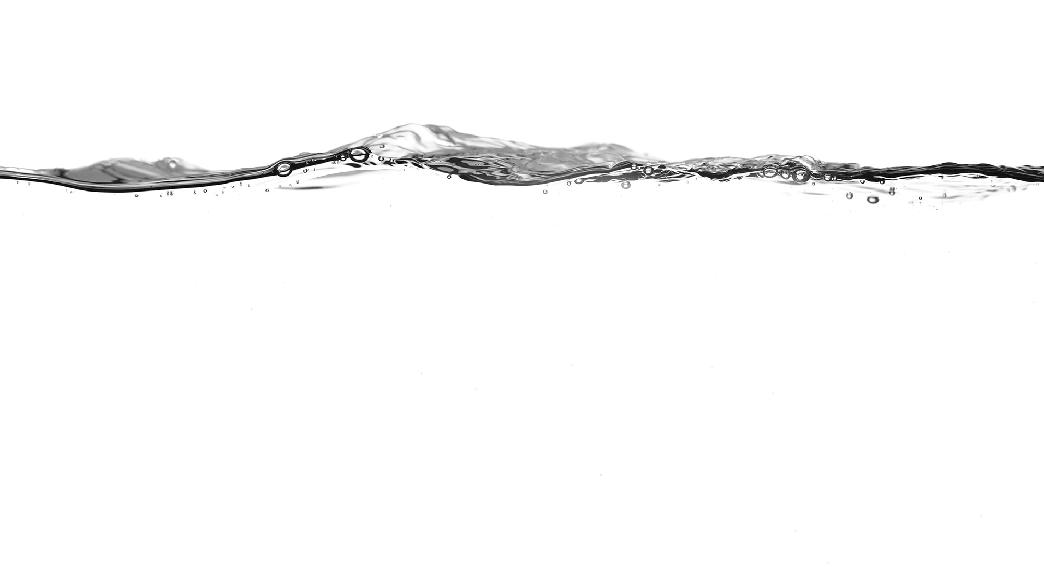
Wickham puts the growth in Fonterra’s ingredients business as one of his highlights.
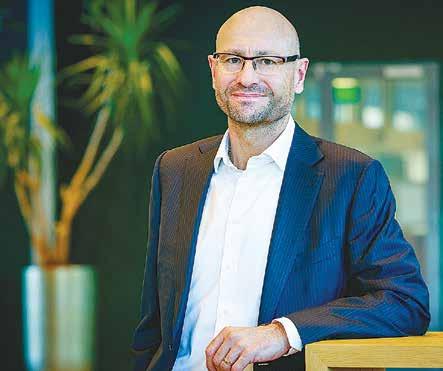
He has worked in many markets across the world, and seen all chan nels reach new levels of growth.
“And when I think of my roles, they’ve always had an element of change and transformation in them. It’s been a per sonal highlight to see how our ingredients business in particular has evolved, watching it do its part to take our business to new heights of growth and innovation.”
And there have been a few key milestones behind that, with the launch of Global Dairy Trade (GDT) being one of them.
Wickham recalls that it was a great achieve ment for Fonterra and the industry as GDT was launched during the global financial crisis.
He also points to Fonterra’s focus on advanced, high value ingredients.
“We established our Active Living and Medical Nutrition business units, which have now come together as one Active Living team, and ulti mately led to the creation of Nutiani, our new health and wellness brand under NZMP.
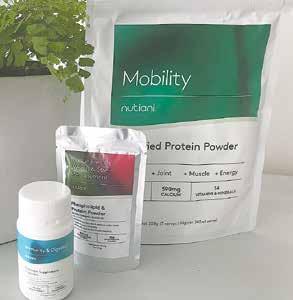
but I’m not surprised,” McKenzie told Dairy News of the result.
GROUNDSWELL CO-FOUNDER Bryce
McKenzie says he is ulti mately unsurprised by the results of a recent Curia poll which showed a lack of support for methane emissions pricing.
The poll, commis sioned by Federated Farmers and conducted prior to nationwide pro tests on the issue, showed that only 26% of respon dents thought New Zealand should price agri cultural emissions before other countries.
Fifty seven per cent of those surveyed were opposed with a further 17% unsure.
“I think it’s wonderful,
He says people are starting to wake up to the idea that when methane is taxed, it will make a huge difference to rural areas and it’s an impact McK enzie claims will feed into the cities.
“It’s going to push food prices up and it’s going to create a scarcity,” he says.
McKenzie admits that New Zealand does export a lot of its product, but he says the flow on effect from the policy will be that those export markets will still want the product.
“That’s not going to leave any more food for New Zealand just because the price goes up as other countries accept that
price,” he says.
McKenzie told Dairy News that while he hopes the results show his organisation’s campaign ing and lobbying is work ing, he also thinks there is more to it than that.
“I think common sense is prevailing. I think… people generally, once they get a few facts put in front of them are pretty
quick to work out the consequences for them selves, especially if it’s going to be in their back pocket.”
He’s not alone in that perspective on the results.
ACT Party primary industries spokesper son Mark Cameron says the poll shows New Zea landers simply don’t want methane pricing before
any other country.
“The farm tax will ulti mately be a food tax as prices of meat and dairy rise as a result,” Cameron says.
The says the proposal doesn’t come close to resembling what was put forward by the He Waka Eke Noa partnership ear lier this year.
“It doesn’t recognise
sequestration, it doesn’t involve farmers in the governance, and the levy will be set by the Minis ter,” Cameron claims.
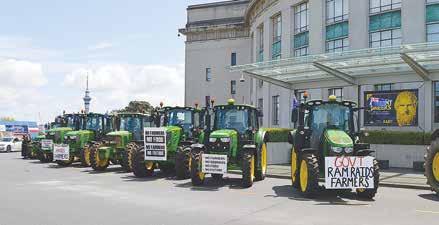
He says the Zero Carbon Bill, which ACT voted in favour of in 2017, set a target for farm emis sions.
That target was 24% below 2017 levels.
“The solution that Labour has chosen to meet the target is to hammer our farmers and increase global emissions.
“Kiwi farmers are the most emissions-efficient in the world and they’re not praised enough for this, but there’s more work to be done.”
Federated Farm ers national president Andrew Hoggard notes there doesn’t appear to

be much of a rural-urban divide in the numbers.
“It seems no matter where you are in New Zealand, you are against the proposed methane tax,” Hoggard says.
He says Kiwis should be concerned by the num bers put out by the gov ernment.
“New Zealand’s farm ers lead the world in pro ducing meat and milk with the lowest emissions footprint.
“If they’re pushed into reducing production by new taxes, and that shortfall on international markets is picked up by less emissions-efficient farmers, global warm ing increases and we’ve hammered our domes tic economy for no gain,” Hoggard says.
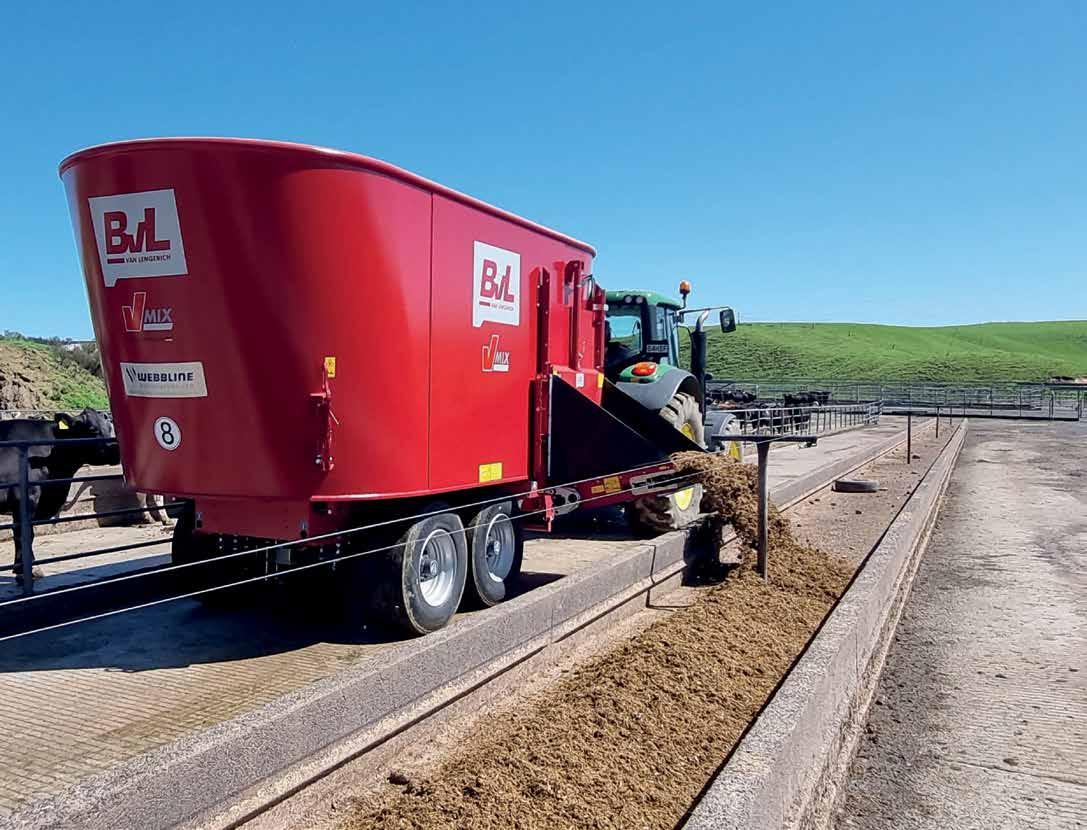
ERS John and Maria van Heuven believe in leav ing their 164ha property in a better condition than when they bought it 20 years ago.
Hence the Mata mata dairy farmers of 50 years quickly joined the Bridge to Bridge project (B2B), backed by Waikato Regional Council and Fonterra.
The three-year com munity-run project was completed recently with eight kilometres of the Waitoa River fenced and 17,000 native plants and trees in the ground.
The project involved landowners on either side of the Puketutu and Sta tion Road bridges near Matamata, removing pest
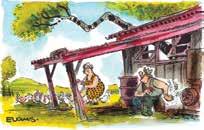
plants, relocating fenc ing from the river’s edge to create bigger ripar ian margins and planting native plants and trees.
The Van Heuvens says they are thrilled with the work that has been done on their farm.
“It’s fantastic seeing the previous year’s plant ings coming up now. I can’t wait to see what it will look like in 10 or so years.”
The project started after some landowners approached the council and Fonterra for support.
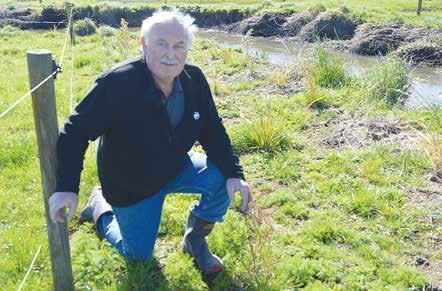
John Van Heuven, whose farm on the river flat and flood-prone, says WRC officials visited each property and recom mended suitable trees and plants.
The van Heuven family farm has planted all natives – ribbonwood, lemonwood, cabbage
trees, manuka, kanuka and even kahikatea and totara.
For some farmers the project took a few hect ares of land off the farm but van Heuven says it’s worth it.
“Hey, this is the future, we are thinking about the environment,” he told Dairy News
“We are doing it for the sake of our children and grandchildren.
“We are leaving the land in a better condition for them than what we started with.”

He says the project has been a team effort and praised WRC and Fon terra for their contribu tions.
“We weren’t expecting a contribution from Fon terra but they had some money available for plant ing and then the regional council got on board; they were happy to help us out,” he says.
WRC catchment man agement officer Amy Tsao says all the landowners were keen to work with
them.
“It’s so rewarding to see the progress that’s been made.”
The project wrapped up with a final planting day involving staff from both Fonterra and WRC infill planting a further 200 trees and doing some weeding to release young plants put in the ground from previous years.
Fonterra’s local gov ernment and stakeholder affairs manager Philippa Fourie says it’s always a good day when staff get to go out in the field and help landowners with planting.
The Fonterra staff members were part of the Matamata-Piako Com mittee, which oversees Fonterra’s support to local community projects under its new Hapori pro gramme.
“We’re proud of the
commitment shown by the farmers involved in this project,” says Fourie.
“Our Sustainable Catchments initiative is all about achieving sus tainable water catchments where we operate, and we know that by work ing with others we can achieve more when it comes to protecting and regenerating waterways and biodiversity.”
WRC Hauraki catch ment team leader Aniwa Tawa says effort that has been put into the project by everyone has just been awesome.
“All that is required to be done now is some ongoing maintenance by the landowners to keep the young plants free of weeds so they can flour ish and grow to be big and strong.”
@dairy_newscom/dairynews
EASING GLOBAL dairy prices have prompted one bank to drop its forecast milk price for this season by 60c/kgMS.
ASB, which had stuck to a record $10/kgMS forecast for most of the new season, is now predicting a $9.40/kgMS farmgate milk price for Fonterra farm ers.
The bank’s new forecast is now more aligned with Fonterra’s range of $8.50 to $10/kgMS with a mid-point of $9.25. Westpac is also forecasting $9.25/ kgMS for this season.
ASB economist Nat Keall says prices have eased more than what the market expected.
“Given the ultra-tight global supply outlook, we’re still picking dairy prices to head higher, but the demand just isn’t there right now and that weighs heavily on our forecast given prices for a huge chunk of the season’s product are being struck right now,” he says.
“We’ve revised our farmgate milk price forecast lower to $9.40/kgMS, which is still one of the highest fig ures on record.”
He still expects tight global supply to boost prices eventually.
“As we’ve long highlighted, global dairy production remains extremely weak in many jurisdictions.
“That’s particularly the case in the EU – the world’s largest single exporter – which is also set for a grim end to the year as energy prices surge.”
NZ dairy production is also likely to be subdued with pasture growth impacted by wet weather, rising onfarm costs and labour shortage.
Keall believes global growth over the next couple of years looks set to slow further.
“But we still don’t think dairy con sumption will fall enough to offset the impact of tighter supply.
“Over the medium term, we just don’t think there will be enough supply to meet demand, and that should be a boon for dairy prices.
“Add a very weak NZD into the mix and it’s a positive outlook for farmgate returns,” says Keall.
Open Country Dairy chief execu tive Steve Koekemoer says the recent downward trend in global pricing is disappointing but somewhat expected.
The inflationary pressure around the world and China’s lockdowns will continue to impact short term demand, he told Open Country suppliers in their latest newsletter.
He also expects dairy prices to remain high.
“Our expectation is that the tight global supply conditions will offset much of the demand drop and pricing will recover over the medium term.
“Currency benefits will also offset some of the price falls as we move through the season. All processors, including Open Country would already have FX cover in place for a large part of the season.
“We would still be covering for ward at the current favourable rates. It is more a case of when this benefit will flow through into the milk price.”
– Sudesh KissunFONTERRA HAS unveiled upgraded ‘appli cation centres’ in Beijing and Shanghai where inhouse chefs demonstrate the co-op’s products for bakery and catering cus tomers.
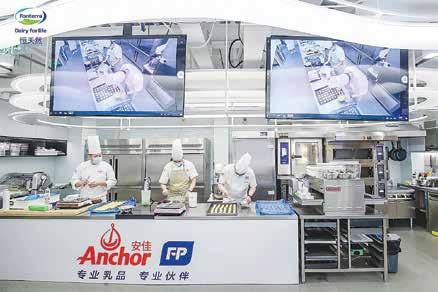
The upgrade is one of Fonterra Anchor Food Professionals’ most signif icant recent investments in North China.
One of the highlights of the upgrade at Beijing facility is fully optimised experience for both cus tomers and internal staff, Fonterra says.
In the demonstra tion kitchen, the audiovisual equipment set can instantly transform the
kitchen into a panoramic live streaming stage for chefs. It takes just a second to change the background from baking to water bar to other consumption scenes to enhance customers’ inter active experience onsite.
Fonterra also says the renovated centre fully reflects its culture, creat ing a more comfortable working environment for the staff and chef team to offer more high-quality services for customers in their peak form.
“The centre’s garden is a great place to connect to nature, where custom ers can also enjoy tea and coffee set-up in the after noon to try sample bever ages and newly developed bakery applications,” it says.
Established in 2014, the Fonterra Shanghai Application Center is the main application centre of the co-op’s catering service business in China, which creates nearly 300 new recipes every year.
The Shanghai Appli cation Centre also does local tests for Fonterra Anchor Easy Topping Cream, Anchor CheesePro Cream and Anchor Easy Mix Cream Cheese, all of which are custom ised for China’s market.
Fonterra says opti mised digital experience is one of the highlights of the Shanghai facility.
The four fullyequipped kitchens – Cake and Bakery, Bread and Chinese Pastry, Tea and Coffee, and Chinese and
Western Food – all have live broadcast kits in place to release digital new products and recipes. The centre also facilitates Fon terra’s product training nationwide.

Since its establish ment, Fonterra’s technical expert and professional chef teams have held over 100 product R&D semi nars, 40 customer dem onstrations and 20 online live broadcasts of innova tive applications in Shang hai each year, providing customers with creative recipes across multi ple channels, including bakery, dining and drink ing.
Fonterra Greater China chief executive officer Teh-han Chow says the food and beverage market in China has immense
potential and is one of the strong engines for the coop’s continued expansion in China’s market.
“As one of the best partners for premium food service providers in China, we hope to use the important milestone of opening our upgraded Beijing Application Centre as an opportunity to con tinue to develop more solutions for local market needs, with excellent market insight and inno vative energy to drive the industry to further dairy upgrade.
“We want to share more quality dairy prod ucts from New Zealand with our customers, part ners and consumers. This has been our commitment and vision in China for almost 50 years.”
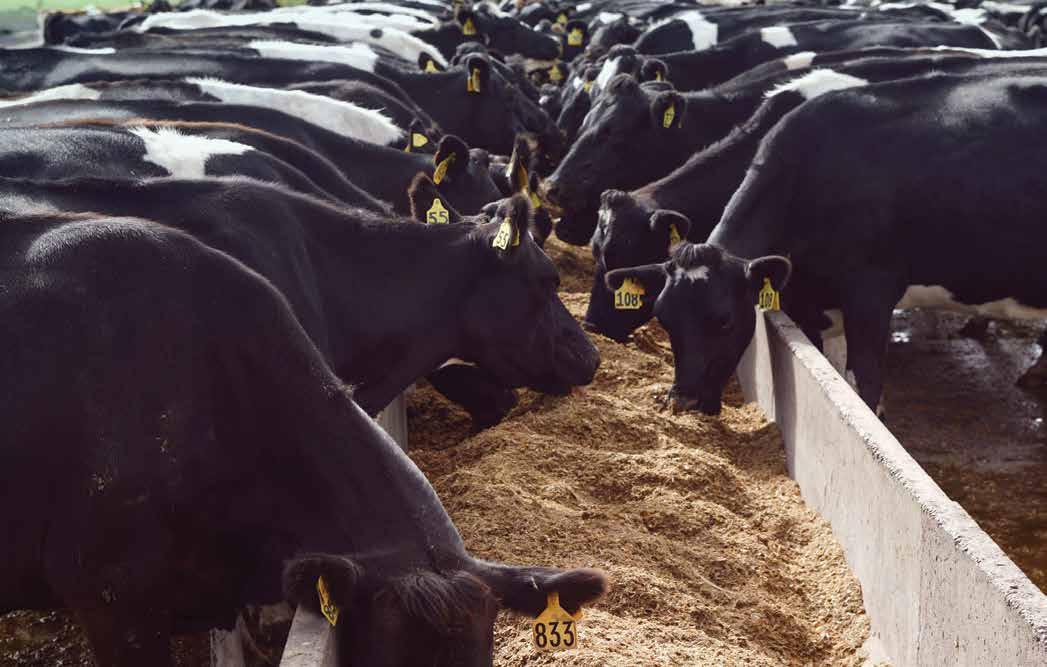
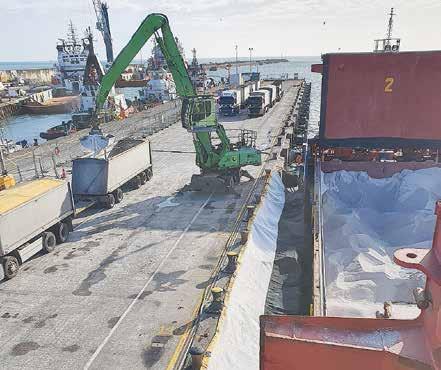
COSTAL SHIPPING
is a key part of fertil iser co-operative Ravens down’s national emission reduction strategy, says its sustainability manager Allanah Kidd.
“We are endeavouring to supplement road with coastal shipping, where the opportunity arises, to reduce our impact on cli mate change.
“It’s a more efficient way to move product, takes trucks off the road and reduces congestion,” says Kidd.
She made the com ments as New Zealand’s newest addition to the coastal shipping fleet, the MV Rangitata, made her maiden voyage last month, carrying product for Ravensdown.
For its first journey, MV Rangitata took phos phate rock from Napier to Dunedin, then 2,000 tonne of superphosphate
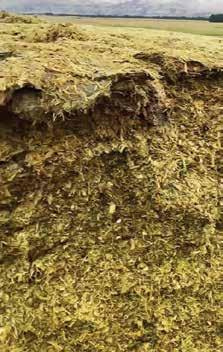
from Dunedin to New Plymouth.
Beyond this maiden voyage, Ravensdown will look to engage the vessel as required to move cargo into smaller ports – like Whangarei, Whanganui, Gisborne and Nelson.
The trip by ship reduced carbon diox ide emissions by an esti mated 39 tonne when compared to moving the same volume of product by road.
Kidd says New Zealand has environmental com mitments to meet.
“This is about New Zealand Inc., and on behalf of our farmer shareholders, we’re happy to be doing our bit to respond to cli mate change. It is a vis ible demonstration of our commitment to reducing greenhouse gases as part of our sustainability tar gets.”
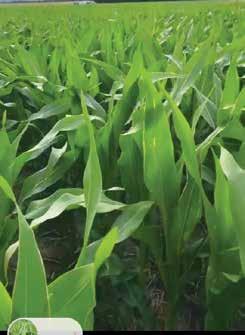
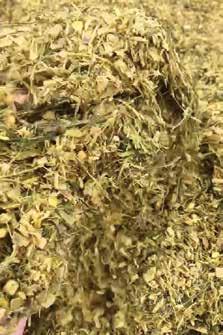
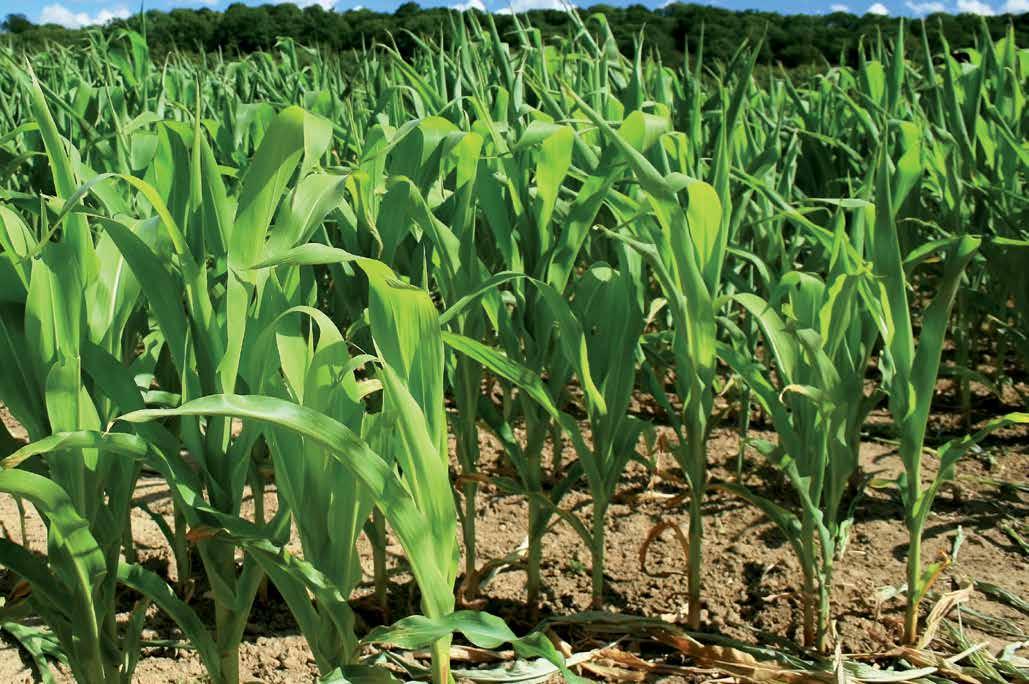
The vessel is the newest addition for Coastal Bulk Shipping Ltd, one of four preferred suppliers in a $30-mil lion government invest ment for coastal shipping funding through the
National Land Transport Programme (NLTP) to improve domestic ship ping services, reduce emissions, improve effi ciency, and upgrade mari time infrastructure.
Ravensdown has used
Coastal Bulk Shipping for many years. This is the first journey on their new vessel, which has a greater payload so offers addi tional benefits. The new ship can carry approxi mately 2,000 tonne of
superphosphate, com pared to the company’s smaller 800-tonne vessel, Anatoki.
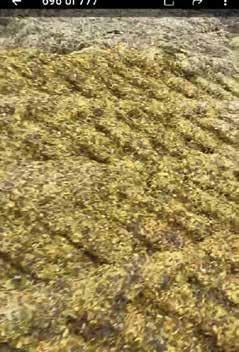
Ravensdown national logistics manager Ant Boyles says the co-op is willing to switch product transfers from road to sea when necessary.
“We all have a part to play in trying to be as efficient as we can.
Coastal shipping gives us the opportunity to move our products around in a more greenhouse gas-effi cient manner, and because this new vessel is bigger, we can do one ship move ment instead of two.”
Waka Kotahi worked with the wider freight indus try – NZ Shipping Federa tion, Port Company CEO Group, National Road Carriers, KiwiRail, and Te Manatū Waka - Ministry of Transport – to select four applicants for coinvestment in new and
enhanced coastal shipping services.
It is estimated the new services, once fully opera tional, will remove around 35 million kilometres of truck travel from New Zealand’s roading network every year, reducing wear and tear and improving safety for road users. The four preferred sup pliers will jointly invest more than $60 million into the resilience of the overall freight supply chain, on top of the Government’s $30 mil lion, and will each bring at least one additional coastal shipping vessel into service. In addi tion to the MV Rangitata for Coastal Bulk Ship ping, being utilised by Ravensdown, the other three suppliers are Move International Ltd, Swire Shipping NZ Ltd, and Aotearoa Shipping Alli ance.
BANK Rabobank has appointed two new sus tainability managers to help clients transi tion towards more envi ronmentally sustainable farming practices.
The appointment of Katie Vickers and Gavin Marshall within the bank’s Sustainable Business Development team were announced last month by Rabobank chief executive Todd Charteris.
He says the scope and degree of sustainabilityrelated needs for both Rabobank and its cli ents had grown signifi cantly over recent years as a result of emerging regulatory reform and increasing consumer and community expectations.
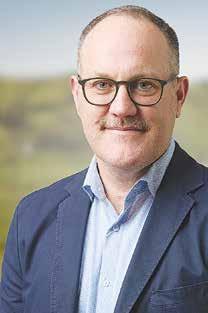
“Consequently, we recognised the need for further sustainabil ity expertise to support the implementation of

our sustainability strat egy, particularly with the development and imple mentation of the appro priate tools, training and resources to have mean ingful and data-driven dis cussions with our clients to support them with the sustainability aspects of their businesses,” he says.
“Katie and Gavin both have the specific experi ence and skill sets that align with Rabobank’s sus tainability strategy, and we’re delighted to now have them on board as part of the team.”
Vickers joined the bank in June this year, having spent the previous eight years with Farmlands Cooperative Society where she was, until recently, the head of sustainability and land use.
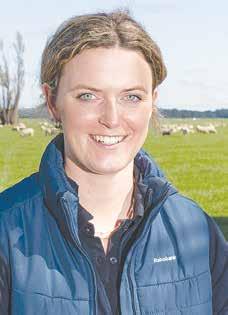
She played a key role in helping to drive and integrate sustainability throughout Farmlands
business, notes Charteris.
“She has excellent communication and lead ership skills, and these attributes have seen her recognised as one of the agricultural sector’s up and coming leaders.”
In 2020 she was awarded the NZ Co-oper ative Emerging Leader of the Year award, and in
2022 she was named as a finalist for the 2022 Zanda McDonald Award.
“Katie’s new role with Rabobank will see her focused on supporting our staff with learning and development so they can have meaningful sustain ability discussions with the bank’s clients,” says Charteris.
“She’ll also assist with the development and delivery of our client knowledge programmes.”

Marshall joined Rabo bank in August this year and brings with him 15 years’ experience in the agriculture sector, the last six years spent as an envi ronmental programme lead at Fonterra.
“In that role, Gavin designed, developed and managed the implemen tation of programmes focused on supporting farmers to reduce their environmental footprint – primarily around fresh water and climate,” Char teris says.
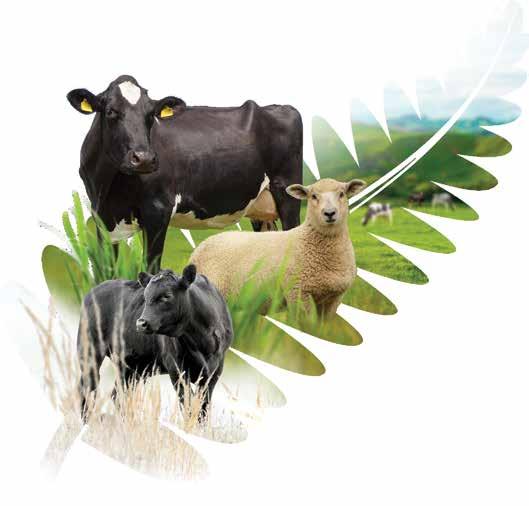
“In his new position with Rabobank, Gavin will be responsible for the development of the online tool used by the bank to assess the non-financial performance of our cli ents’ businesses – includ ing their environmental, agronomic, social and workplace performance –with the aim of advancing the insights this tool pro vides for our clients.”
Both Vickers and Mar shall will report into the bank’s head of sustain able business develop ment Blake Holgate, who has been in the role since early last year, and with



the bank since 2012. With the new addi tions to the team now up and running, Holgate says the bank was well placed to establish a unique market position built around providing its cli ents with the knowledge, networks and finance.
“As a bank built upon co-operative values, we’re committed to helping our clients develop and imple ment sustainability solu tions that best meet their unique needs.
“We strongly believe the best way to do this is through meaningful engagement that pro vides them with infor mation so they can make good decisions for their businesses, and by then providing a financial solu tion that best aligns to the decisions they’ve made,” he says.
@dairy_news facebook com/dairynews
CORPORATE DAIRY
farmer Southern Pastures has been judged to be a responsible investment leader for the seventh year running.
The company, which owns 19 dairy farms in Waikato and Canter bury and is the owner of premium dairy brand Lewis Road Creamery and wholesale business
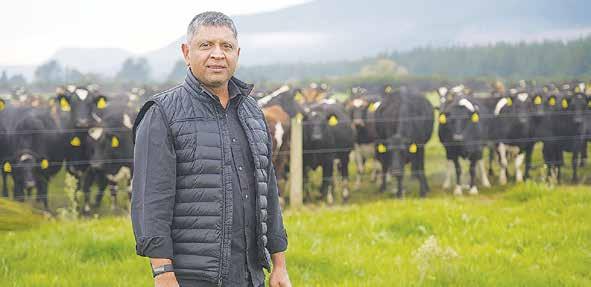
NZ Grass Fed Products LP, says it remains the only organisation from New Zealand’s agricul ture and food sectors to ever be included in the annual benchmark report released by the Respon sible Investment Associa tion Australasia (RIAA).

“So often the pasto ral industry is judged by outputs such as emis
sions, but we’re not nearly as rigorously measured or assessed for the posi tive services that some of us provide,” says Prem Maan, Southern Pastures’ executive chairman.
“On our farms, we have a massive pro gramme of work under way to sequester carbon and reduce our green house gas emissions and foster biodiversity through, for example, good soil management, native plantings, and animal feed.
“We also act at execu tive level as strong stew ards for more sustainable and resilient assets and markets. The RIAA bench mark is one way these positive efforts are inde pendently recognised,”
says Maan.
RIAA represents inves tors with assets under management of over US$29 trillion, including NZ Managers who repre sent $328 billion.
Southern Pastures pro
duces milk under its inde pendently-audited 10 Star Certified Values standard, which covers stringent grass-fed, free-range, cli mate-change mitigation, human welfare, animal welfare, and sustainability
requirements.
It doesn’t feed cows imported palm kernel expeller (PKE), claiming its production contributes to loss of rainforest and biodiversity.
It also refuses to trade
in carbon credits or off sets to achieve its zero carbon ambitions, but is committed to long-term farming techniques such as low tillage and deeprooted plants that capture and store carbon from the
atmosphere. It’s also trial ing and measuring numer ous other initiatives such as biochar, dung beetles and prebiotics, as well as retiring land to native plantings.
“Soil can hold up to three times the amount of carbon than the atmo sphere and all plants com bined,” says Maan.
“We think a posi tive approach to preserv ing carbon in our soil is potentially part of the answer to mitigating cli mate change.
“It’s a shame that carbon sequestration through on-farm soil management, native plantings and biodiversity is not prioritised in New Zealand over monoculture exotic trees.”
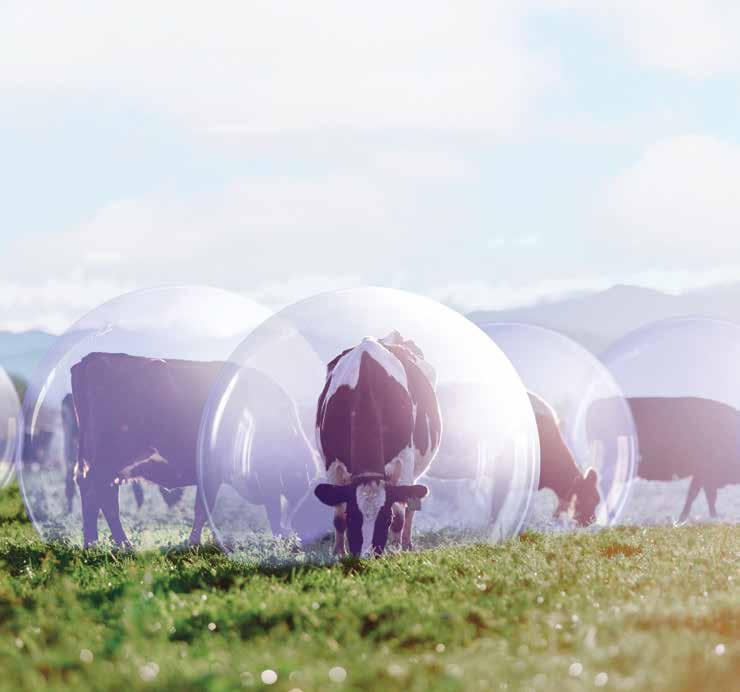
FONTERRA IS pour ing $600 million in the coming years to reduce water use and improving wastewater processing at its milk plants.
The co-operative’s aims to take a leading industry approach on wastewater management.

As part of the upgrade, the co-op is investing $51 million to improve waste water processing at their Te Awamutu site in the Waikato.
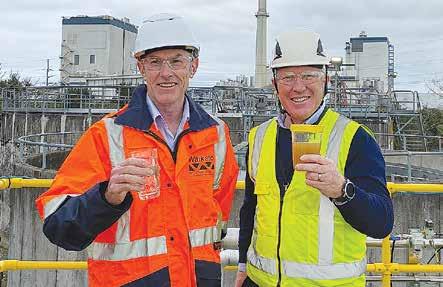
Fonterra Te Awamutu operations manager Rus sell Muir says the exten sive wastewater upgrade is a positive step for the site and is part of the coop’s long-term sustain ability goals.
“Reducing water use and improving wastewater at our manufacturing sites is a key part of our long term strategy, and over the next eight years the co-op will invest around $600 million on improve ments.
“Our target is to improve wastewa ter management at our manufacturing sites by taking a leading industry approach.”
Construction on the project began last year, and while Covid-19 has presented some chal lenges over the course of the project, stage one construction has just been finished and envi ronmental performance has already significantly improved.
This is the second
major sustainability proj ect the site has under taken in recent years. Earlier this year it com pleted its first season on wood pellets rather than coal – helping the co-op reduce its carbon emis sions by more than 11% last year.
The upgrade at Te Awamutu is one of the first wastewater proj ects being run by a newly established Wastewa ter Community. This new community is a part nership made up of key industry partners includ ing PDP, Babbage, Beca, Vertex Engineers, Aure con, Tetra Pak, Fulton Hogan and TEG.
Over the next 10 years, these partners will work together to share knowl edge and expertise to make improvements on subsequent projects.
Fonterra says this will ultimately help the co-op to deliver on its envi ronmental promises, by improving its existing wastewater management and performance.
Fonterra general man ager water & environment Ian Goldschmidt says the co-op believes that a lead ing industry approach to wastewater quality requires a truly collabora tive attitude.
“We know that we will need to do things differ ently to achieve our goals and are excited to have developed this crossindustry partnership, bringing together a well-
respected group of sub ject matter experts. Water is precious taonga and it is up to all of us to do our bit to protect this valuable resource for Aotearoa,” says Goldschmidt.
“Throughout the proj
ect at Te Awamutu, we will be continuously look ing for ways to improve – not only to implement within this project, but to share our knowledge with the wider Wastewater Community team.”

THE RECENT Groundswell national protest was surprisingly a fizzer in some rural regions
In Waikato, our local journalist reported just a handful of people turning out at one of the protest sites
The number of tractors and utes converging on town centres as part of the protest was also way down compared to the previous event run by Groundswell
Various reasons are being thrown around for this lackluster response from farmers and rural dwellers in some areas –from the high fuel prices, to a growing disgust with how some extremists and nutters had hijacked the previous protest
THE UK’s revolving door politics of recent weeks means the country’s farmers are getting used to their fifth Secretary of State for Environment, Food and Rural Affairs in five years
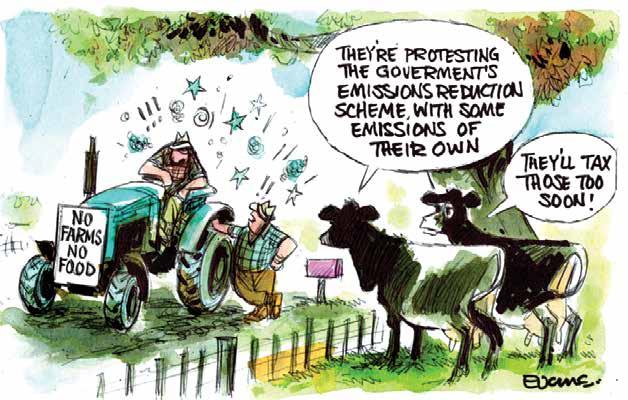
The role, equivalent to that NZ’s Agriculture Minister, has seen a new face every time 10 Downing Street has had a new resident And there have been three in just the past three months
Since 2017, Michael Gove, Theresa Villers, George Eustice, Ranil Jayawardena and Therese Coffey have held the Secretary’s role Coffey was appointed to the role last week by new PM Rishi Sunak
Jayawardena holds the record for the shortest tenure – one month and 19 days – under Liz Truss’ prime ministership
WEST AUSTRALIAN dairy farmers struggling to find revenue streams are turning to alcoholic spirits – not drinking but making the products
The ABC reports that alcoholic spirits made from cows’ milk might raise a few eyebrows, but farmers say the innovative beverage could help the battling dairy industry
To that end, one cheese and gin maker has begun making a wheybased spirit on his farm in Wokalup, about 140 kilometres south of Perth
Robert St Duke makes his gourmet cheese varieties using milk from nearby farmers He then ferments the watery byproduct (whey) from the curds into a liquor base It produces a clean, strong spirit — similar to both vodka and gin
ABC claims that the craft is not new but is being slowly revived around the globe in places like Ireland and New Zealand
RISING LIVING costs in the UK have pushed the price of cow’s milk, a staple for households across the UK, above dairy-free alternatives for some shoppers
A two-pint bottle of own-brand milk now costs £1 25 (NZ$2 50) on average across four of the UK’s main supermarkets, a 36% jump since January
The nearest comparable own-brand alternatives, which come in one-litre bottles, cost £1 05 ($2 10) for soya milk, £1 07 ($2 14) for almond milk and £1 24 ($2 47) for oat milk, according to retail research company
Assosia
Typically, plant-based products such as oat milk have cost more than cow’s milk, with some cafes facing criticism for charging extra for the non-dairy options Vegan activists and customers suffering from lactose allergies have even complained that the charges are discriminatory
They can’t complain any more
FARMERS IN many parts of the North Island are now facing a looming feed crisis.
The rain has been relentless during winter and spring and the ground is saturated in a way not seen before. This applies not only to dairy farmers but also horticulturalists and anyone who works the land for a living. Not only has there been heavy rain, stifling pasture growth, the lack of sunshine hours has meant that whatever grass that has managed to grow is ‘gut less’ and lacking in nutrition for animals.
Anyone travelling around the North Island in recent months would know: there is simply not enough grass available to ani mals compared to the norm for this time of the year. Travel ling between Horowhenua to Napier over the weekend, I saw just two farms that had or were in the process of making grass silage and the cuts from those two were sparse to say the least.
Farm consultants are worried because dairy farmers are having to use their reserves of supplement to keep cows in condition for mating and the word is that many cows will not be mated on the first cycle due to their condition.
Crops are at least a month late going in and what happens from now on is in the lap of the gods – especially if we end up with a dry summer.
This is potentially one of the worse seasons for dairy farm ers in parts of the North Island for many years. The feed pinch comes at the ‘money time’ of the year when in theory milk pro duction should be at its highest – but it’s not and forecast to be down around 4% on last year.
So there is mounting pressure on farmers to feed their stock, a fear of rising input costs and potentially a shortfall in income. At the same time, the Government is relentlessly forging ahead with its environmental agenda with seemingly little regard for the consequences of the lives of rural people.
The mental health of farmers and their families is now seri ously at risk but it seems the politicians and bureaucrats tucked away in their cosy Wellington glasshouses don’t know or care about people outside the city limits.
Things are piling up on rural communities. The ‘pile on effect’ is now reaching breaking point for many people. Will we see more suicides in rural areas? Undoubtedly. Will farm ers sell their land to the plant-and-run carbon farmers? Abso lutely! And does Wellington care? No way! – Peter Burke
AUCKLAND
WAIKATO
lisaw@ruralnews.co.nz
WELLINGTON
Ph 021-963
Ph 027-369
Ron Mackay Ph 021-453
ronm@ruralnews.co.nz
SOUTH ISLAND
: Kaye Sutherland Ph 021-221 1994 kayes@ruralnews.co.nz
Dairy farmers in the Lower North are doing it tough That’s the message reporter Peter Burke has been getting as he has travelled around the North Island in recent weeks He reports on what he’s seen
DRIVING FROM home base in the Horowhenua through Hawke’s Bay and up the East Coast, it’s pretty evident that feed for cows is in short supply and that ground is still wet.
There are large pud dles in many paddocks and there is little evi dence of grass silage being made. On last week’s trip to Napier I saw only two farms where silage was being cut and, in both instances, the amount of grass that had been cut was pretty meagre com pared to previous seasons when one would have seen a hive of activity, cutting and bailing grass silage.
The word from farm consultants is that silage

production is significantly below what is normal for this time of the year and that this and the plant ing of crops is at least a month behind normal. To add to the problem, the view is the grass is ‘gut less’ and of poor qual ity because of the lack of sunshine and the con tinuous rain. One farmer told me that he couldn’t remember a week when it hadn’t rained.
For dairy farmers this is the ‘money time’ –when production is sup posed to be at its peak – but it isn’t and the number being quoted is that milk production will be down by 4% on last season which itself was not a good season.

According to one rural
professional in the lower North Island it’s been the hardest season that people can remember. He says fortunately there has been warm weather but everything else has gone against farmers, with low sunshine hours and well above average rain fall. This has impacted on utilisation and has meant farmers have had to use more supplement than normal.
For all the challenges, the consultant told me that farmers have done a remarkable job look ing after their animals and their soil.
But again the wet weather and the lack of feed appears likely to affect cow condition and in particular mating, and
there is a belief that many cows won’t get in calf the first time.
“It’s a tough gig at the moment and has gone beyond being the saying ‘this is just farm ing’ – this is far worse. For many farmers ‘the fridge is empty’ – meaning they have virtually run out of supplements,” says one consultant Dairy News spoke to.
The big problem now is that the soil is so satu
rated, in the lower North Island and all the way up to Gisborne, that even a minor overnight rain fall can cause flooding on farms and on commercial growing operations.
As little as five or ten millimetres of rain will fill pug marks in paddocks and damage crops. This is the case on coastal sand country from Manawatu through to Horowhenua. This land is supposed to be able to absorb water,
but it is saturated. Bun kers on local golf courses have become duck ponds for the first time ever.
While all this is hap pening with the weather, farmers are facing the uncertainty and onslaught of new government reg ulations. The ‘pile-on’ effect, with more and more stresses being placed on farmers, has seen many now talking of quitting and selling their land to those wanting to
plant trees.
From the observations of Dairy News, the mood of many dairy and other farmers is one of fear, despondency and anger at the latest response from government on how agricultural gas emis sions should be dealt with. It would seem that the prospect of a good payout for dairy farmers is little compensation for the myriad of other chal lenges they are facing.
SOUTH WAIKATO farmer Gray Baldwin has stepped down from the LIC board after a 10-year stint.
Baldwin, a third-gener ation farmer, and his wife Marilyn milk 850 cows on their property near Lichfield.
Baldwin says it has been a pleasure to be part of the co-op and serve his fellow farmers during such a transformative time.
“LIC is a fantastic cooperative with a great heart and future, and a butt-kicking balance sheet,” he says.
“The co-op I’m leav ing is a more efficient and lean machine than when I started 10 years ago, and it’s one of the strongest companies I govern.”
GOLDEN BAY farmer Corrigan Sowman was elected as LIC’s third South Island director.

Sowman runs Uruwhenua Farms, a 400ha family owned dairy farm, and is a member of the Fonterra Sustainability Advisory Panel, a group provid ing independent advice to the Fonterra senior management team and board.
Sowman says it’s a privilege to be elected to the LIC board.
“Dairy farmers are enjoying
Baldwin heralds the recent journey of
LIC’s automation busi ness as the project he’s
record milk prices and have a truly exciting opportunity to provide grass fed nutrition that the world wants. “But it comes with new responsibilities and challenges, and I look forward to contributing to LIC as it supports farmers with science, innovation and services that meet these head on.”
His election means LIC has three directors each for North Is land and South Island, as voted by farmer shareholders in 2020. Corrigan Sowman, new LIC director.
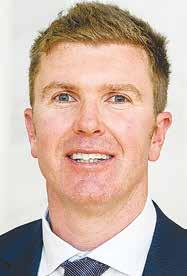
most proud to have been involved in.
“The board made a concerted effort to grow the automation business and make it profitable. Even though it wasn’t all smooth sailing, it was incredibly insightful.
“The proposal to buy a stake in (Israeli agritech company) Afimilk got us on the map with automa tion which ultimately led to the successful sale of LIC’s automation busi ness.
“That sale is the key reason we’ve got a strong balance sheet with no debt.”
Baldwin says he’s had a great run on the board and looks forward to watching the co-op continue to grow and develop.
“Most people would describe LIC as a genetics business, but I think a data company is a more accurate description.
“There are huge oppor tunities for LIC in the data space and I think it’ll become hugely successful in that area.”
At the co-op’s annual meeting last week in Palmerston North, LIC chair Murray King thanked Baldwin on
behalf of the co-op for his outstanding contri bution.
“Gray has been an out standing director, always representing what’s good for our farmers and sup porting what’s best for the co-operative. We have been very fortunate to have his expertise on the board for the past ten years.
“Gray is a highly experienced commercial director whose skill for calling a spade a spade always adds to the quality of our discussions around the board table and our decision making.
“In particular Gray’s clarity and strategic think ing means he has made a big contribution as a member of the audit and risk committee.”
Baldwin started his career in rural banking and the fertiliser indus try and has worked in a number of governance roles in the agriculture industry including as board director for Farm lands, Trinity Lands and Ballance.
He is a graduate of the Fonterra Governance Development Programme and of the University of Missouri’s Graduate Insti tute of Co-operative Lead ership programme.
“LIC is a fantastic cooperative with a great heart and future, and a butt-kicking balance sheet. The co-op I’m leaving is a more efficient and lean machine than when I started 10 years ago, and it’s one of the strongest companies I govern.”Gray Baldwin says it
time.

REPORTS COMING in from across the country indicate many farmers and contractors are behind with their crop planting schedule due to the cold, wet spring.


This is especially true when you compare this year with the previous two seasons where a drier-thannormal winter was followed by a relatively dry spring. Whenever we get wet springs, we get the same question from growers, “…it is now early Novem ber, is it too late to plant my maize silage?” And like it seems is true for most important things in life, the answer is “it depends”. So, before I seek to answer this question let me cover off a few points that will help frame the answer for you.
When it is too risky to plant small seeds, you can usually plant maize. Unlike the seed of many crops including brassicas and chicory, maize seed is large. Big seeds have greater
reserves and can be planted deeper. This means maize can be success fully established across a wide range of soil conditions resulting in a wide planting window. In most areas of New Zealand maize silage crops can be planted into December and still produce reason able yields. In sea sons where brassica crop establishment has failed and the replanting window for brassicas has closed, maize silage is often planted as a sub stitute.
Maize is a warm weather tolerant plant.
Maize has a different way of produc ing sugars to grow, compared to most other crop species (e.g. turnips). This biological advantage, combined with a deep rooting system, means that during summer months, maize silage can pro duce much more dry matter than other
plants that prefer cooler, wetter grow ing conditions. Also, because maize development is largely driven by tem perature, planting later in spring means that there is more heat available each day. The warmer the weather gets, the faster maize grows.
Maize roots travel deep into the soil to get water.
We used to say that maize roots grew to a length that was up to two thirds the height of the plant. New Zealand research conducted by the Pio neer team shows maize roots can grow much deeper. In fact, where there was no soil impediment, maize roots were recorded growing to more than 3.5m allowing them to aggressively scavenge water and nutrients.
Maize hybrids come in a wide range of maturities giving increased flexibility.
The length of time it takes for the maize plant to go from a given planting date to a harvested crop is determined by three main factors. These are hybrid maturity (which impact the amount of
heat units the specific hybrid needs to reach maturity), the weather (espe cially moisture) and temperature. You cannot control the temperature or weather, but you can control the hybrid you plant. The Pioneer line-up includes hybrids that require relatively small amounts of heat to reach matu rity right through to hybrids that need a lot of heat to get them to harvest maturity. This gives the grower more options to match their target planting and/or harvesting dates.
New Zealand research has helped us quantify how late growers can plant maize.

As part of his PhD, my colleague Dr Rowland Tsimba looked at the impact of planting date on maize yields across a range of maize hybrid maturities. He found that the planting window for each hybrid maturity was far wider than we first thought.
Rowland used data collected from field trials plus long-term weather data to develop a model to predict potential yield loss due to delayed planting. This


showed that provided the right hybrid maturity was selected, maize planted in late November in the Northland, Waikato, Bay of Plenty or Manawatu in a had ≥90% chance of successfully reaching silage maturity and yield between 85% and 94% of its maximum yield potential.
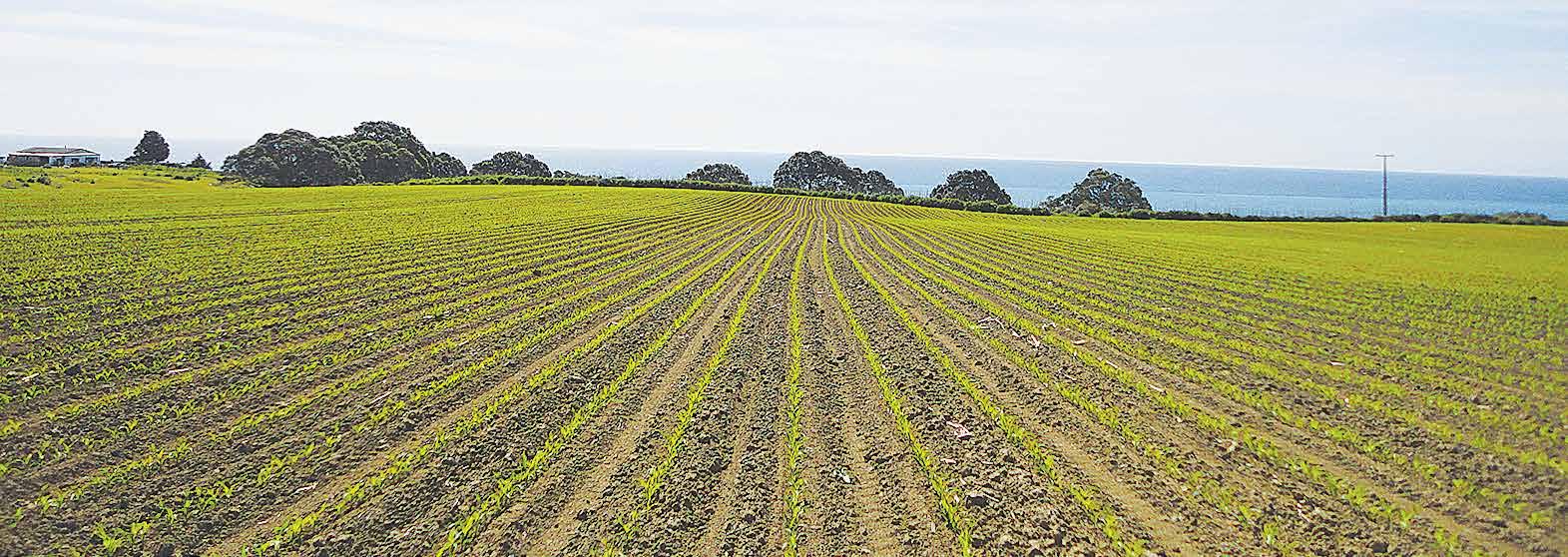
Rowland and his team conducted some field research where they com pared maize planted 20 October versus 20 November.
Despite a month’s difference in planting date, there was only a 15-day difference to silking time. By silage har vest time, the difference had further decreased to just over a week.
So, from a maize development or yield perspective, late November is not too late to plant maize.
If you need to plant any later than this, contact your seed merchant or local Pioneer area manager and they will be able to help you make an informed decision.
• Ian Williams is a Pioneer forage special ist. Contact him at iwilliams@genetic.co.nz

 BOSWELL
BOSWELL
A “LATE” start to cattle showing hasn’t dulled Southland teenager Chloe Thomson’s love for the pastime, and the Holstein Friesian breed. In fact, it has only made it stronger.

Chloe, 17, lives with her family on a dairy farm, Thomson Dairy Ltd, at Winton, and was intro duced to showing cattle at age 12 by Julia and Stew art Eden and their family.
“The Eden kids showed cattle, and they suggested I give it a try,” Chloe says.
“The first time I did it, I fell in love. The Edens took me under their wing. They gave me a red Hol stein Friesian calf to clip, break in and take to shows. They fostered my love of showing.”
The Thomsons milk 300 cows on a 120ha milking platform, under Empire stud. Chloe’s par
ents Andrea and Heath, Chloe, and her broth ers Hunter and Cooper converted the farm from sheep to dairy in 2014.
After her introductory year of showing, Chloe made sure she had her own calves the follow ing year. At age 13 she and her best friend took two calves out on the show circuit.
While Mycoplasma bovis caused some disrup tion to the show sched ule, it didn’t dull Chloe’s enthusiasm for her new found passion. Although the smaller shows in Southland were cancelled, she was able to travel to the North Island to take part in the show circuit there.
Chloe has also attended three National All Dairy Breeds Youth Camps at Stratford, Wyn dham and Waikato.
The first camp she attended was especially exciting, as it ensured she
was still able to “halter a calf” despite M. bovis cancelling all shows that year.
“I loved the camp,” Chloe says. “Everyone was so supportive, and they brought in such talented and experienced people
to help us. I’ll always remember the leading tips they gave us, and the clip ping, which I really enjoy. It’s the perfect environ ment in which to learn and soak up information, and to have fun.”

Chloe would like to try
and attend the next youth camp in January 2023, the last one before she leaves for university.
“Even if I don’t take part to the extent of the younger kids, I can still help Amelia (Grif fin, HFNZ Field Officer)
behind the scenes,” Chloe says.
“It is super cool to meet new friends and see the friends I’ve made over the years.”
be able to take my knowl edge and apply it to our own farm business and help Mum and Dad for a bit.
“And if a great job opportunity arises, I would consider taking it.”
Chloe is already imple menting her interest in genetics at home and was pleased to purchase four animals at the 2022 Okawa Holsteins sale –three calves, and one inmilk seven-year-old cow sired by Okawa Goldwyn T-Rex-ET.
“These animals are a big advance on what I currently have,” Chloe says. “I have been doing small amounts of breed ing from my former show calves that are in milk now, but I’ve had some hard luck so far.”
Chloe says there’s a lot to love about the Holstein Friesian breed.
•
•
ANOTHER BIG focus for the Thom son family is breeding for A2, some thing Chloe is taking forward as she creates her own herd.
Mum Andrea has a boutique milk business, selling organicallyproduced A2 milk in reusable glass bottles.
Chloe is active in the industry and enjoys helping studs from all over the country prepare for sales and attend shows.
She attended the 2022 NZ Dairy Event with Okawa Holstein Friesians, and the Stratford Young Stock Show with Waipiri Holsteins. She also attended the Okawa and Tahora sales in April 2022.
“I love helping out at sales and doing sale preparation,” Chloe says.
“I love meeting new people, and by watching closely you can learn new skills and get heaps of little tips.”
Currently in Year 13 at Central South land College, Chloe had planned to study a Bach elor of Animal Science and become a veterinar ian. However, a newfound interest has seen a change of heart.
“I’m now planning on going to Lincoln Univer sity to study a Diploma of Agriculture and a Diploma of Farm Management to stay within the dairy industry, hopefully lead ing into genetics in the future,” she says. “After I complete the degree I’ll
“I admire the sheer strength of the breed, its capacity, and its impres sive appearance,” she says. “I like the stature and capacity of the breed a lot; they will always stand out compared to any breed.”
“They are overall strong cows and very dairy, very correct looking cows; no other breed is the same.”
Chloe says she loves a good show cow but understands that a com mercial farming business needs something more than a pretty cow.


ANOTHER CASE of Mycoplasma bovis has been discovered in Can terbury, bringing the total number of active cases to five.
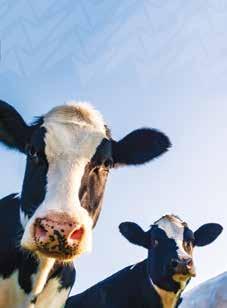
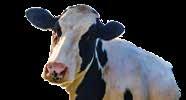
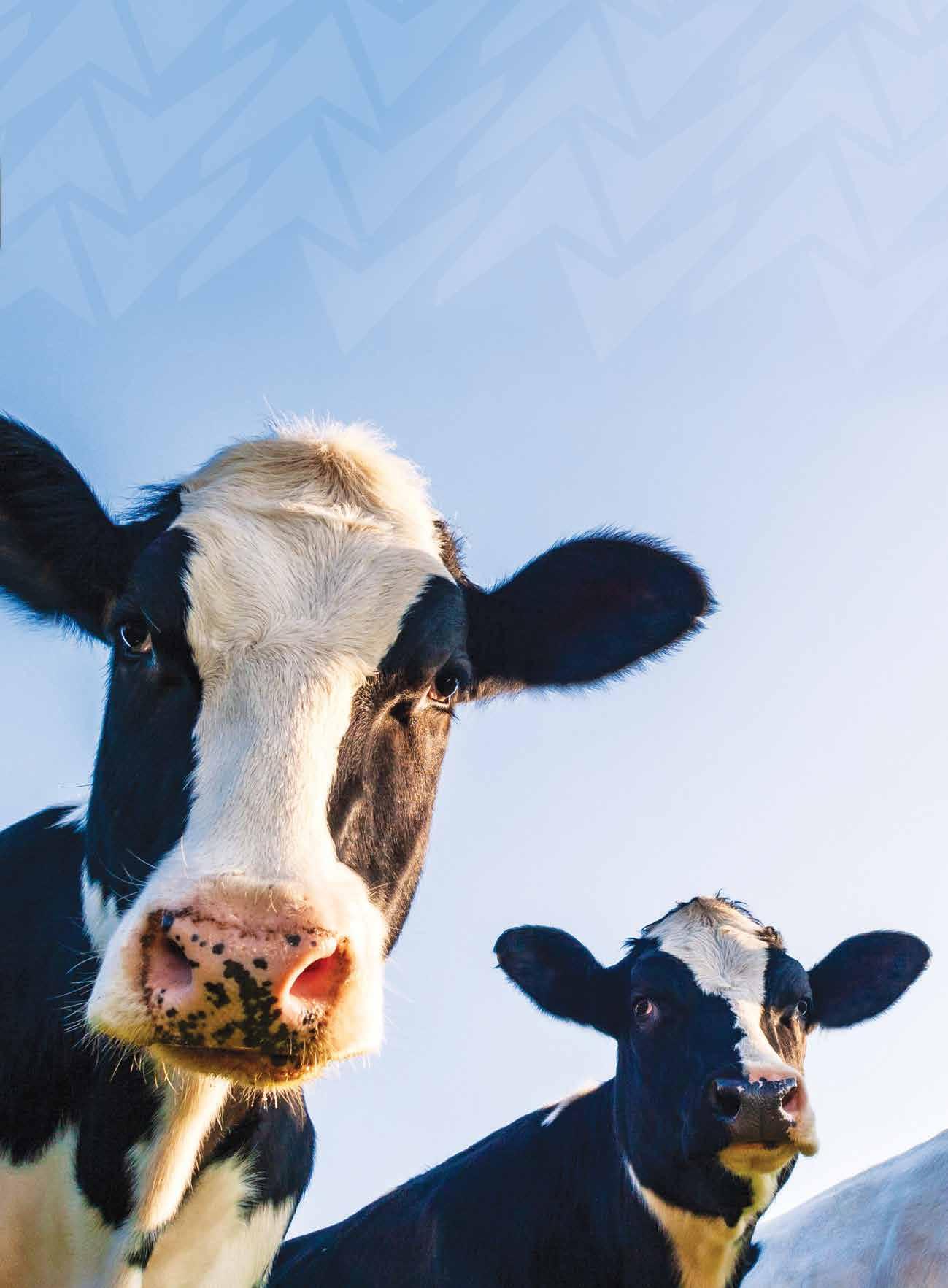
The Ministry for Pri mary Industries (MPI) says the latest case does not appear to be the new strain 29 which is cur rently under investigation.
Meanwhile the direc tor of MPI’s M. bovis pro gramme Simon Andrew has confirmed that the herd of cows in Canter bury where a new strain was discovered will have to be slaughtered.
He says his organisa tion is working with the farmer to determine a convenient time for the herd to go and says the farmer and his family are being very cooperative at this difficult time.
Andrew says there is good pastoral sup port programme available to farmers, their family and community that are caught up in an outbreak of M. bovis.
“We have good rela tionships with our part ners such as DairyNZ and B+LNZ and we have got an independent group that supports farmers when in putting compen sation claims through as well.
“Then we have got the Rural Support Trust in there as well providing support,” he told Dairy News
Andrew says MPI is continuing its investiga tion into how the new strain, known as strain 29, got into the herd.
He says they are look ing at a number of path ways it might have taken into NZ and onto the property, including farm machinery, frozen semen and embryos. He says
they want to get a clear understanding of what has happened and will continue their extensive testing programme.
He says, in addition to the testing on the affected farm, they have a rigor
ous ongoing testing pro gramme that they do nationally and have con fidence that with this and the traceability work, they will be able to identify any new risks.



Andrew says every

single commercial dairy farm in the country is tested fortnightly via the bulk tank milk surveil lance programme and other targeted testing.

“There is no evidence of this strain being found anywhere else, but it is important that we con tinue to do the testing. We are in a very different place to where we were when M. bovis first came into the country. We have a significant testing pro gramme, technical and operational capability and experience in dealing with it,” he says.
Andrew says a number of actions have been
taken in recent times to mitigate the risk of the disease going unchecked. He says new import health standards have
to do the investigation and we have to be openminded that it might be difficult to identify a cat egorical link to the new
“But it’s important to note that all the respec tive pathways are incredi
bly low risk,” he says. He says they will con tinue to seek advice from technical experts in NZ and overseas, but points out than many overseas countries are very inter ested in the work that MPI is doing here.
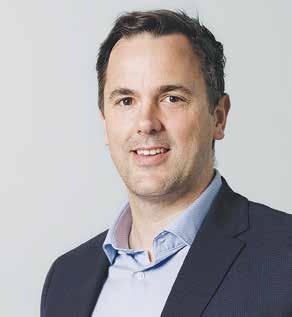
“We are in a very different place to where we were when M. bovis first came into the country.”
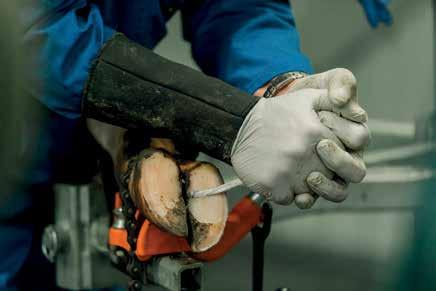

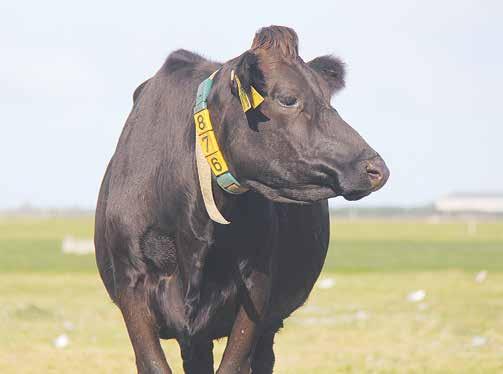
He did acknowledge that trusting the technol ogy was still a process, regardless of his solid intentions.
“I was invested for sure, but early on, if I saw a cow bulling, I thought the collars must have missed her. So, I’d go and check and sure enough, she would have been mated the day before, or if I decided to override it and mate her today, she’d be on heat the follow ing day.
“I did that until I got sick of it – which didn’t take long – and the tech nology was always bang on.”
by a 98-hectare run-off block within 500 metres of the properties).
wasn’t until Christmas time that we sort of had a break,” Mark says.
“I was always in the cowshed milking the cows, every day for the first six weeks. I think heat detection is the one job farmers think they can’t let go of. I would hate to add up the hours I spent watching cows for heat.”
Three years ago, farm owner Geoff Hay made the move to engage with technology to ease the pressure. His solution was to fit both herds with heat and health monitoring collars.
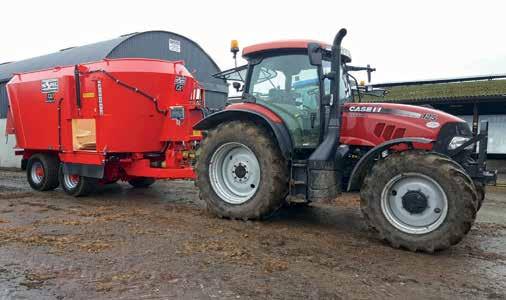
“Geoff is very tech savvy and enjoyed that stuff,” Mark says.
“He could see things were coming to a head for me, and it came at a time that things were just
starting to take off with the collars. To be honest, I was intrigued simply because I was so tired.”
He says they did their homework and chose the GEA CowScout collars because the battery’s lifes pan was up to three years better than the competi tion and the software was effective and user-friendly. Together with excellent reliability, this is what Nedap technology – which powers CowScout – has been known for over the past decades.
CowScout moni tors cow neck movement 24/7. Showing each cow’s activity and in turn alert ing farmers to heats and potential health problems.
“We have had some discussion groups around the collars locally and I’ve seen how the data from different collars look,”
Mark says.
“I’m a pretty simple dude, and our graphs looked way simpler. I could interpret the data pretty easily, and so could my staff.”
Mark and Geoff also wanted to work with Waitaki Dairy Solutions, who had installed their GEA dairy and worked closely with GEA, making their transition seamless.
“I made a deal with myself that the day we put those collars on I was not going to buy another bucket of tail paint. I’ve kept that deal.”
Their goal was to improve their six-week incalf rates from 68% (done solely on visual heat detection).

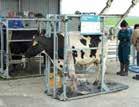

They added 250 straws of sexed semen on their last season to make the challenge more interest ing: their six-week in-calf rate lifted by 8%, to 76%.
“The idea of using sexed semen was to get all our heifer calves on the ground within the first four weeks of calving,” Mark says.

“Normally [on a human visual assess ment], we expect sexed semen conception to be about 10-15% lower than it is using conventional semen. Our conception rate for the sexed semen this season was only 0.5% behind our normal semen, which I thought was pretty, bloody good.
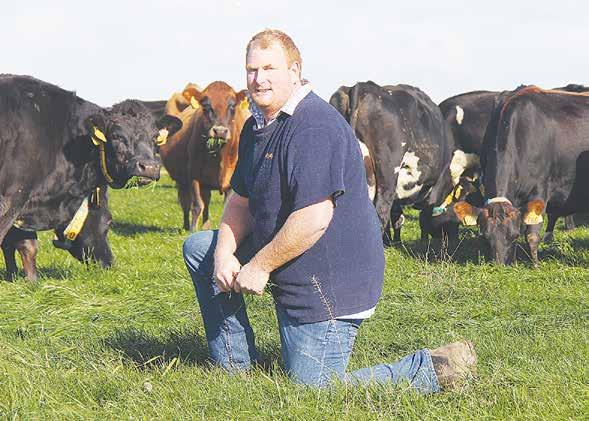
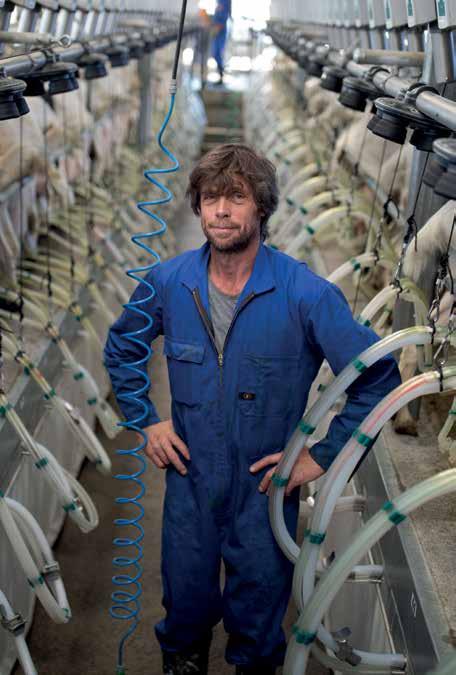
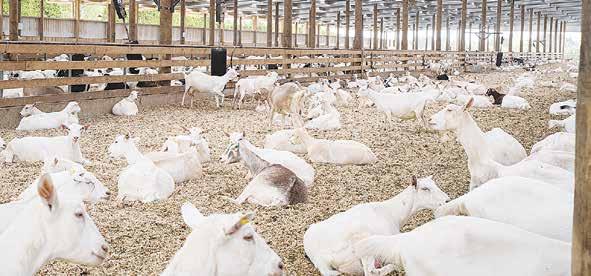

fatty liver disease can often go unno ticed in goats until it’s too late.
WHEN PEOPLE think of liver func
tion, they usually have a very vague concept around the filtering and cleansing of blood.
The liver performs this particular function, but it also does many other things. The liver is one of the most complex of all the body’s organs, and it is no different when it comes to goats.
Performing numerous important functions for the body, one of the most overlooked roles of the liver is the fact that it is the single most important organ for metabolising, releasing, and controlling energy pro duction. Energy production of course happens at the cell level.
As this organ plays such a key role in energy production, it’s no surprise that metabolic diseases such as keto sis in ruminants can be so affected by poor liver function. Over-condition ing goats during the previous lacta tion, and during the period leading up to kidding is particularly prob lematic. Issues that ultimately lead to
Like the rest of the body, the liver requires a number of key nutrients to function at an optimal level. The liver is unique among body organs in that it has capacity to regenerate cells par ticularly when under challenge. Even when a liver is functioning normally, some liver cell damage will be con stantly occurring. The thing that makes the liver so unique is it has the ability to increase its rate of regenera tion and turnover of new cells in line with the level of cell damage: on the proviso that there are key essential minerals, vitamins, and amino acids available in sufficient quantities.
Key minerals & vitamins to sup port a milking goat’s liver function:
■ Magnesium – helps with release of toxins in the blood allowing the liver to do its job more effec tively.
■ Copper – involved in anti-oxi dation, reducing byproducts of energy metabolism, one of the most important functions of the liver.
■ Zinc – plays a role in liver health
through the regeneration of cells, as well as in anti-oxidation.
■ Selenium – along with iodine, is involved in thyroid hormone production, as well as cell regen eration.
■ Iodine – production of thyroid hormones, the liver is important in further synthesising these hor mones.
Vitamins such as B12 and B2 are important in methionine synthesis.
Of course, many other vitamins and minerals will be important, but most should be present in the diet in sufficient quantity.
Much trial work has been carried out in order to perfect this process; the technology is at a point where these supplements are now becoming a very important tool in optimising liver function in all classes of rumi nants, specifically goats.
The importance of this essential organ is inherent to maintaining the health and productive capacity: and therefore in turn significant for farm ers of dairy goats and ruminants.
@dairy_news facebook com/dairynews

Wiebe Smitstra, Matamata
Smitstra, who retrofit ted their goat milking shed with a GEA low line double-up herringbone system, say the invest ment is paying dividends.
The system includes automatic cup removers, milk meters and Dairy Plan software.
The efficiency gains have been well worth it, with the Smitstra family saying they see big improvements in milking time, animal health and herd management.
The farm is 130ha and home to a herd of 1,200 dairy goats. Most of the herd are Saanen goats, originally from Switzer
land. Approximately 30% of the herd are replaced annually, with all replace ments reared on farm.

Milking goats is a family business. Wiebe and Piety have been in the industry for 25 years, rais ing five children in that time. The farm is cur rently managed by Wiebe and Piety with the help of their two sons. The goats are milked twice daily, with Wiebe managing the morning shift and the boys managing the after noon shift.
In the past they worked with an old 40-bale herringbone par lour with highline swing over clusters and pulsa tion. Between them, the
family spent up to eight hours a day in the milking parlour – four hours in the morning and another four in the evening.
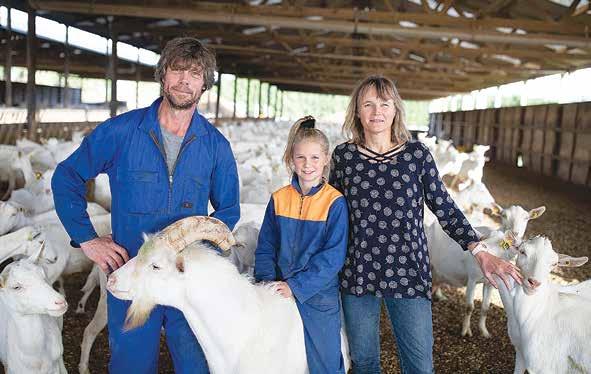
Looking to increase efficiency, Wiebe con tacted GEA.

“I told these guys what I wanted, and they came up with plenty of good ideas, turning our old milking shed into some thing modern and effi cient,” says Wiebe.
“I chose to work with GEA because they have a lot of research behind their equipment and they’ve got plenty of expe rience in the goat milking industry worldwide.”
GEA says its goat milk ing equipment is specifi cally designed around the comfort of the animal, while the range provides flexibility for farmers on a budget, with options to

upgrade at any time. Most of the equipment can be retrofitted to existing par lours.
Wiebe’s upgrade dou
bled the capacity of his parlour to 80 bails. New features include fitting a low line with cup remov ers, Metatron milk meters
together with DemaTron 70 control units (featur ing time or flow take-off) and PPiD (per point iden tification) with RFID.

DairyPlan is linked up to record the milking time, volume and conductiv ity for each animal, with additional information on animal health, mating and kidding.

Wiebe says that since the upgrade, one person can easily manage milking 420 – 500 goats an hour. They’ve shaved off one hour in the morning and another hour and 20 min utes in the evening. And that’s with teat spraying.
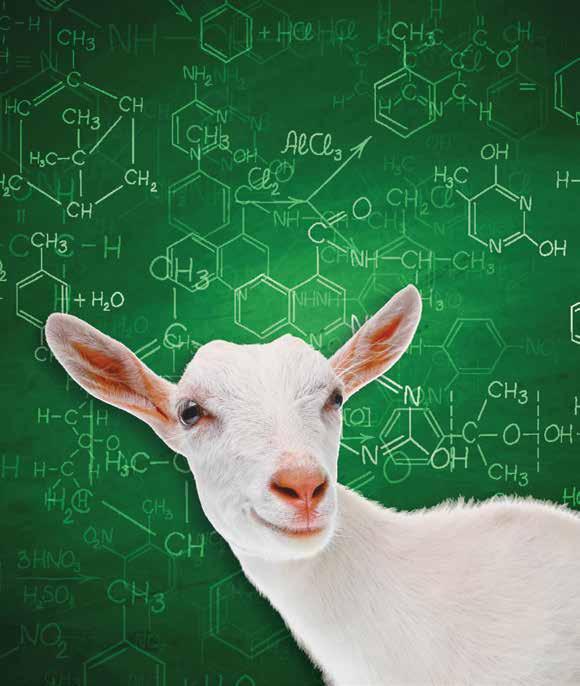
“A double up parlour makes cupping so much quicker, and the cup removers ensure there’s no overmilking,” says Wiebe.
Capturing data is another big plus for him. He can also see exactly how each goat is produc ing as they milk, with the information appearing on the Dematron units above

each animal. This infor mation is fed into Dairy Plan so the Smitstras can see which animals consis tently perform well.
They can also identify animal health and possi ble mastitis issues before they might notice this with their own eyes.
The data is saving the Smitstras money too. For example, they used to herd test 4 times a year, but don’t need to anymore because they can see all the details in DairyPlan.
That’s a saving of around $14,000 a year, says Wiebe.
He also notes their production levels remain similar per goat, but the upgrade enables them to milk more goats. He adds that animal condition is better too.
“At the start of the
season, we had some animal health issues. But since we started in the new plant, those problems disappeared.”
Cup slip is a thing of the past and they have had fewer grading issues.
“We have gener ally been careful about investing too much,” says Wiebe. “But we feel that the goat industry keeps getting better, with the market much more posi tive than it was 20 years ago. The NZ Dairy Goat Co-op continues to want more milk and we’re always aiming to better our operation.”
The Smitstras are well-prepared to increase production with a highend milking parlour and good information on the herd. They have since built a new barn and will increase the herd size.
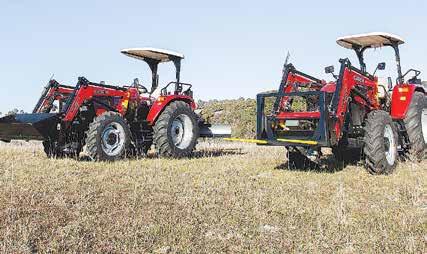
 MARK DANIEL markd@ruralnews
MARK DANIEL markd@ruralnews
FIRST LAUNCHED into the Australasian market in 2018 with the 75hp and 90hp models, the Case IH Farmall JXM range will soon be expanded with two new models, the JXM 55 and 65.
Seamus McCarthy, Case IH Australia/New Zealand product manager for mid horsepower & compact tractors, says the decision to bring the JXM Series to Australia and New Zealand four years ago was based on the needs of the hobby farmer and leisure market, and the latest lower horse power additions would only increase the range’s appeal.
Equipped with a 2.9 litre, 3-cylinder FPT engine that meets Tier 3
emission standards, tur bocharging ensures opti mal engine performance and fuel economy, with outputs of 55 and 65 horsepower. The JXM comes with either a 12x12 mechanical synchromesh transmission or a 20x20 version that includes creep gears. Customers also have the choice of a mechanical or hydraulic shuttle system.
A four-wheel drive configuration allows oper ators to tackle the tough est conditions, while the capable three-point link age system offers lift capacity to 2500kg, a 60l/ min open centre hydrau lic system and two rear remote outlets.
“Since we intro duced the JXM Series to our New Zea land range, it has been very popular, so we’ve listened to our customers and provided more choice within this segment,” says McCar thy. “There is a demand for low hp models with a bigger frame and more weight, brought together in a cost-effective package, so the 55hp and 65hp JXM’s will fit this market per fectly.”
He notes that the JXMs are well suited to a range of farming busi nesses, whether it is as
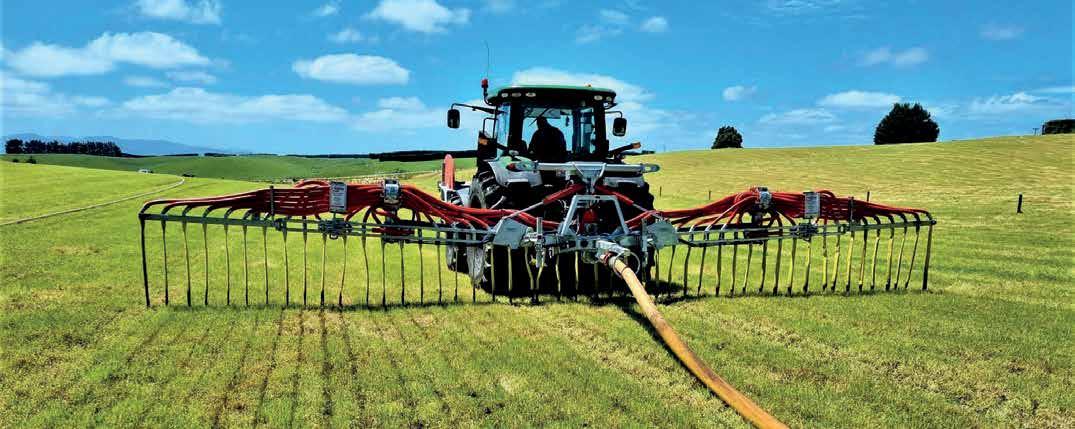
AFTER MACHINERY supply constraints in 2021 and into 2022, CNH Industrial has announced a return to healthy levels of stock at its New Zealand dealer ships, particularly in the popular lower to midhorsepower sectors of the market.
Supply of Case IH Farmall, Puma and Maxxums, New Holland Boomer 25C, T4 and T7 tractors are strong, so customers in the market for a new tractor or needing an upgrade are being encouraged to act now.
“There’s no doubt supply of machinery has been a challenge in the past two years for a range of rea sons, but the situation has significantly improved in recent months and we’re now seeing strong numbers of tractors available, particularly in our mid-size and compact ranges,” said James Perry,
CNH Industrial NZ product manager.

“We’d like to thank customers for their patience during what’s been a challenging time for every one, so it’s now pleasing to see tractors at of our dealerships, with stock continuing to come into the country.”
Perry noted that the recently arrived stock included the newly launched Boomer 25C compact tractor and the new JXM models for the Case IH Farmall range.
“Versatile, manoeuvrable, economical and ro bust can all be used to describe these Case IH and New Holland ranges, making them popular with customers after a handy utility machine, or as a main tractor capable of handling a range of tasks,” says Perry.
panel, an ergonomic operator’s environment designed for greater oper ator comfort and an air filter engineered to deal with dusty conditions so air intake is as clean as possible. It also has a pre-cleaner system that increases the life of the air filter, thereby reducing maintenance and operat ing costs.
McCarthy says the Farmall JXM stands apart from the other Farmall series because it offers value and productiv ity benefits across broad applications, but with a more basic operator inter face.
“Our JXM Series is defined by the fact it’s a tractor up to a multi tude of jobs in a variety of operations, which it car ries out with maximum efficiency and a minimum of fuss.”
“Our JXM Series is defined by the fact it’s a tractor up to a multitude of jobs in a variety of operations.”The new Farmall JXM55.
A NEW effluent man agement product, flushed down the drain during routine shed washdown, is a game changer, accord ing to the man in charge of its distribution in New Zealand.
Biostack, which comes in a liquid form, contains, among other ingredients, a bacteria that uses sun light to work. The bug, technically known as a photoautotroph, utilises energy from light to syn thesise organic matter.
Dairy nutritionist Michael Henne became interested in the technol ogy while farming in the US in 2016. In particular, he saw it as an overlooked way to recycle nitrogen and to generate addi tional dry matter tonnage in New Zealand’s pasture dairy system.
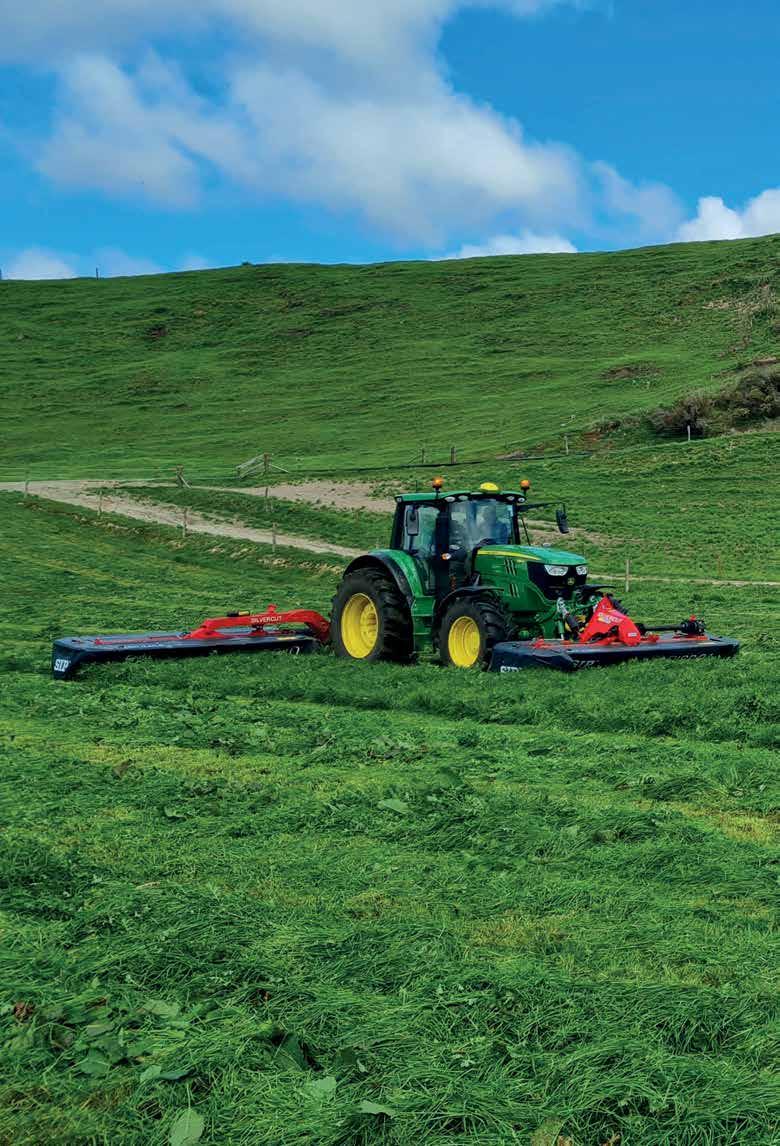
“In America, they were mostly using it on koi ponds and fish tanks – what a waste,” he told Dairy News.
Now resident in New Zealand, Henne launched the product through his employer, Hyprecision Ag Ltd, last year, after sev eral seasons of trials and dosage adjustment to suit local conditions.
“The most valuable factor in utilising biology is having a protocol that consistently works across system types and in the broadest possible set of conditions.”
Henne told Dairy News that his technology is really starting to take off in NZ, as farmers realise the untapped value in their ponds.
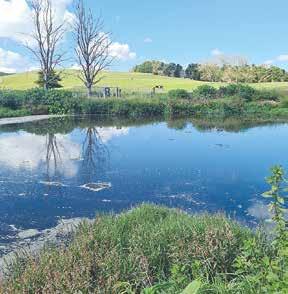
“It’s absolutely unique in the bacterial consor tium and their robust ness and longevity, due to the photoautotroph. Bio stack solves a regulatory and cost problem, but just as importantly, it turns the manure pond into a predictable production resource.”

Henne took Dairy News to a 1,000 cow farm near Mercer which has been using the product. The farm has a liner pond with a large reflective sur face. Within 15 minutes of administration, plumes of bubbles appeared along with foam on the surface. Henne says it’s not atyp ical to see the bacteria start ripping solids off the bottom within the same timeframe.
“On this farm, they are now irrigating green amber liquid and not black sludge,” he says.
“It has also got rid of the smell.”
Henne says the prod uct changes the whole notion of handling solids.
“When we get sun light on the surface of the pond, the bacte ria digest the solids into green liquid and there is virtually no need for the farmer to spend money on a digger to dredge solids.
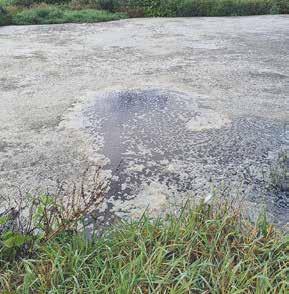
“Biostack also solu bilises micronutrients like nitrogen and phosphorus and retains them during dormancy. This means that when you pump effluent on the paddock or emerging crops, you are taking the micronutri ents to the plant, foster ing additional growth.”
The product is pack aged in a four-litre bottle and dosage is based on

